Selecting the right small tree for your front yard can enhance curb appeal, provide seasonal interest, and fit within spatial constraints. This guide highlights 20 ornamental trees, from compact evergreens to flowering deciduous species, chosen for their manageable mature size (generally under 25 feet), striking foliage, blooms, or berries, and suitability for a range of climates and soil conditions. Whether you seek spring blossoms like those of Japanese Maple and Crape Myrtle, fragrant summer flowers such as Japanese Snowbell and Fringe Tree, multiseason structure from Japanese Stewartia, or year-round greenery of Dwarf Alberta Spruce and Wax Myrtle, you’ll find planting tips and care insights drawn from top horticultural sources.
1. Japanese Maple (Acer palmatum)
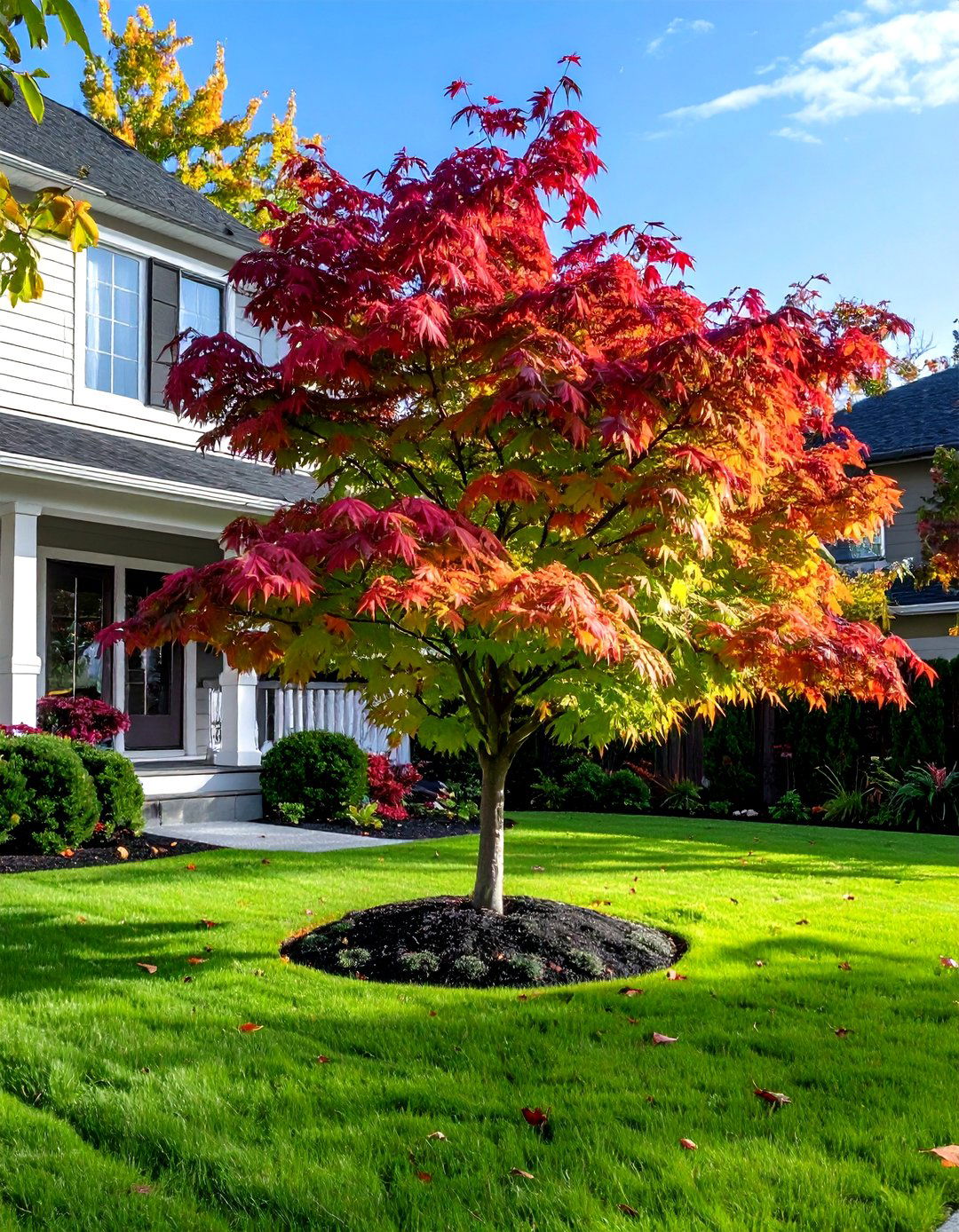
Japanese maples are prized for their lacy, palmate leaves in hues ranging from vibrant green to deep burgundy, making them stunning focal points in small landscapes. Most cultivars mature between 10 and 20 feet tall and wide, though dwarf varieties remain under 6 feet, ideal for tight front-yard spaces. These trees prefer part shade—especially in hotter climates—to maintain leaf color and prevent scorching, and flourish in well-drained, slightly acidic soils. Plant in spring or fall, keep soil consistently moist but not waterlogged, and mulch to conserve moisture. Prune lightly to shape young trees, and avoid heavy fertilization to prevent overly vigorous growth
2. Crape Myrtle (Lagerstroemia indica)
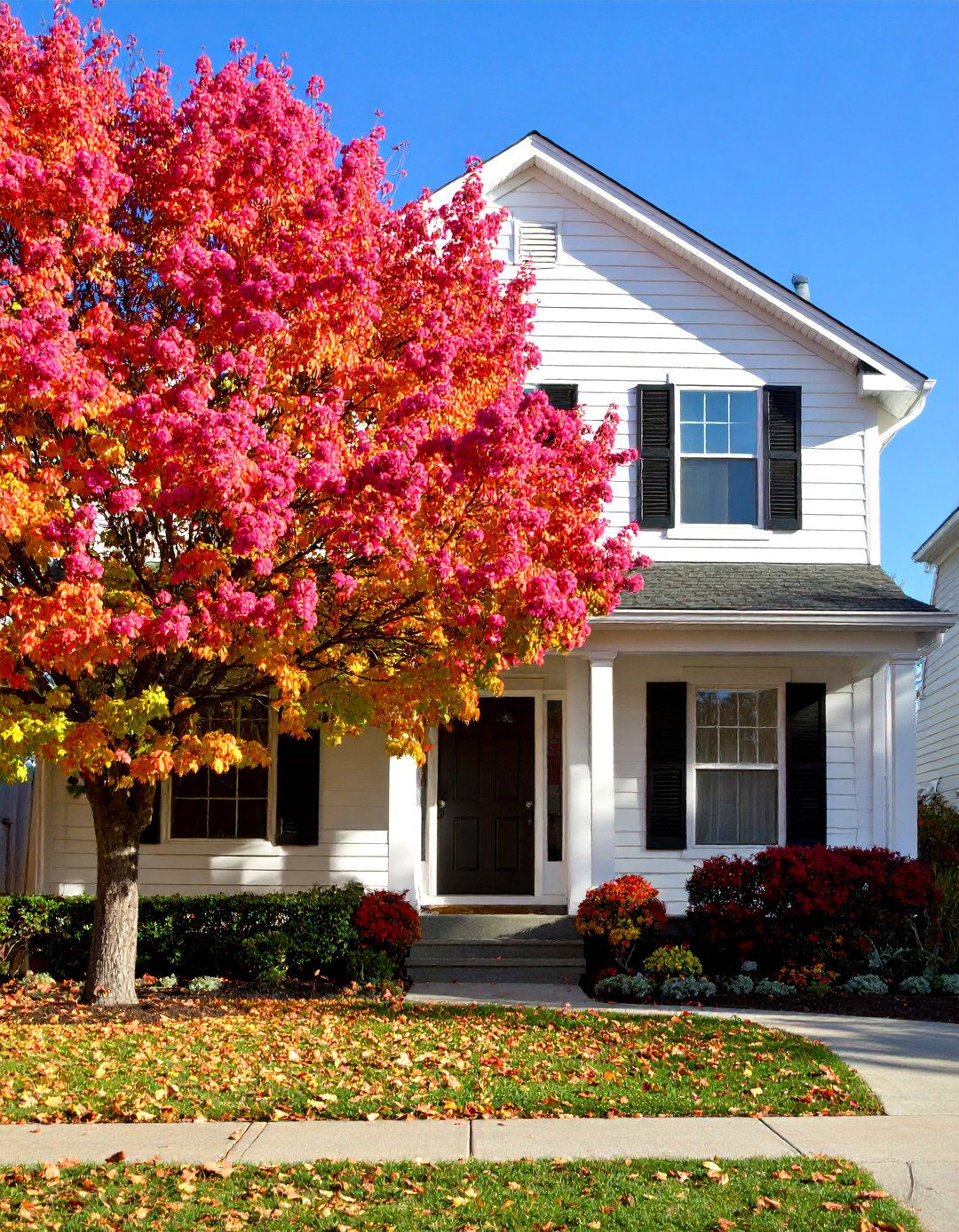
Crape myrtles offer long-lasting summer blooms in shades of pink, red, lavender, and white, followed by attractive exfoliating bark and vibrant fall foliage. Dwarf and semi-dwarf cultivars grow between 8 and 15 feet tall, fitting well in narrow planting strips. They thrive in full sun and well-drained soils, tolerating heat and drought once established. To encourage abundant flowering and maintain a neat habit, prune in late winter to remove dead wood and shape the canopy. Crape myrtles are resistant to many pests, though occasional powdery mildew can be managed with proper air circulation and sanitation
3. Flowering Dogwood (Cornus florida)
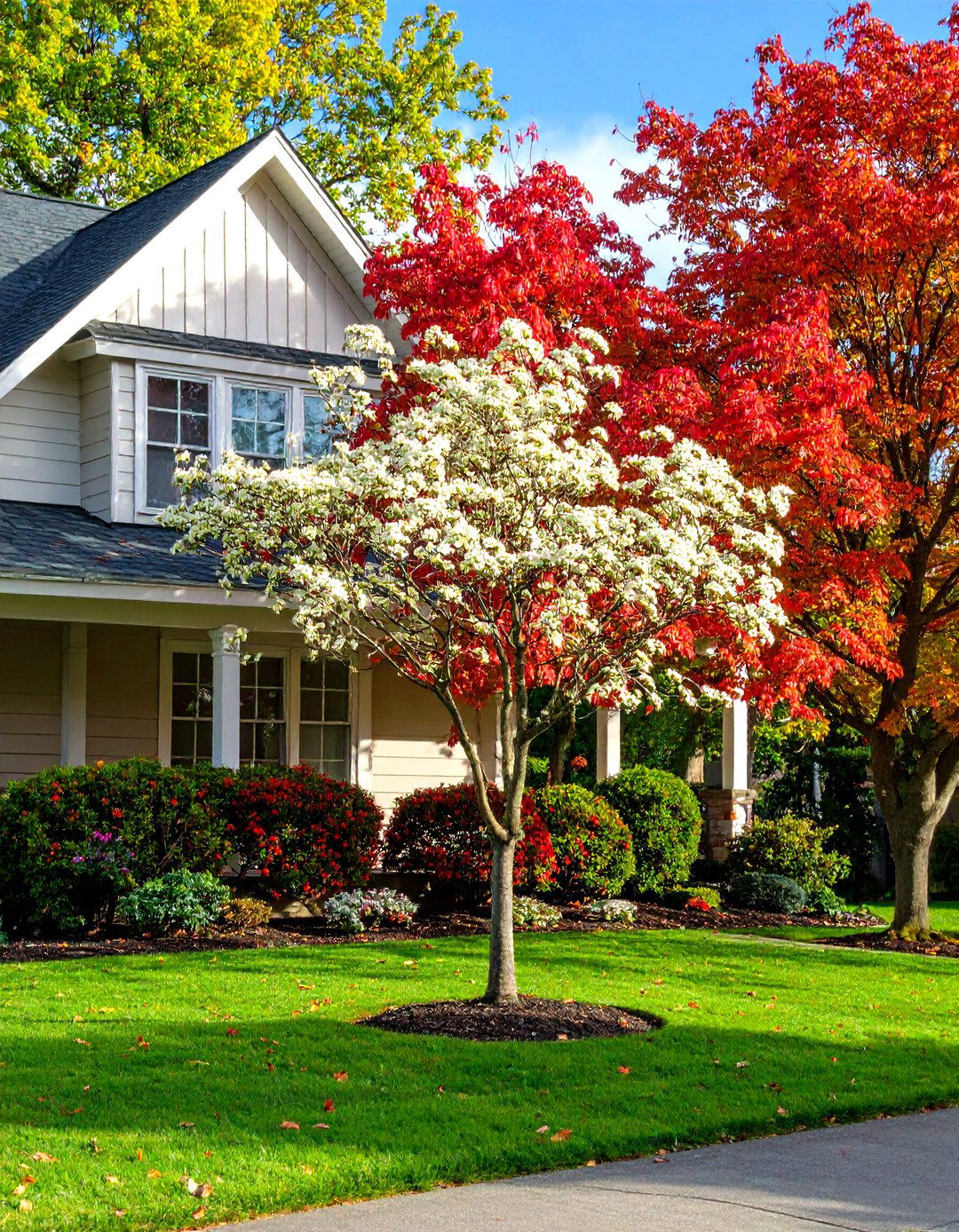
The native flowering dogwood graces front yards with a profusion of white or pink bracts each spring, followed by red berries that attract songbirds and brilliant scarlet fall foliage. Mature heights range from 15 to 25 feet, but understory cultivars and slower-growing types maintain a more compact profile. Plant in partial shade to protect delicate flowers from late frosts and leaves from summer heat. Dogwoods prefer well-drained, slightly acidic, organically rich soils; apply a layer of mulch to conserve moisture and suppress weeds. Minimal pruning is needed—remove dead branches and thin crowded limbs after flowering to improve structure
4. Serviceberry (Amelanchier canadensis)
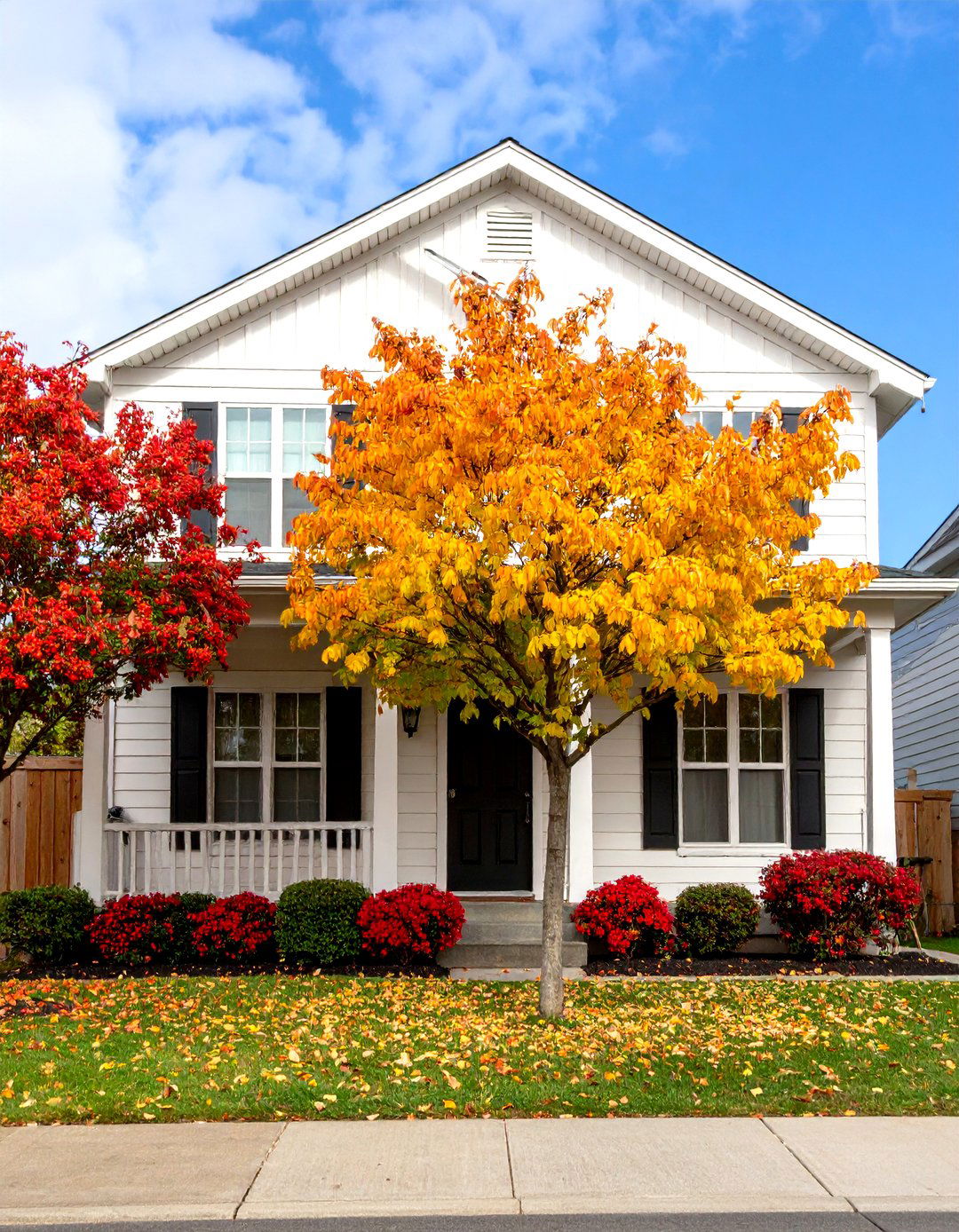
Serviceberries deliver four-season interest: white spring blossoms, edible orange-red summer berries, golden to burgundy fall color, and attractive bark in winter. As multi-stemmed shrubs trained to a single trunk, they reach 10 to 20 feet tall and wide. Serviceberries adapt to full sun or part shade and thrive in well-drained soils enriched with organic matter. They tolerate occasional wet conditions once established. Prune lightly after fruiting to remove any dead wood and encourage new shoots. Birds relish serviceberry fruits, enhancing wildlife value in a front-yard planting
5. Kousa Dogwood (Cornus kousa)
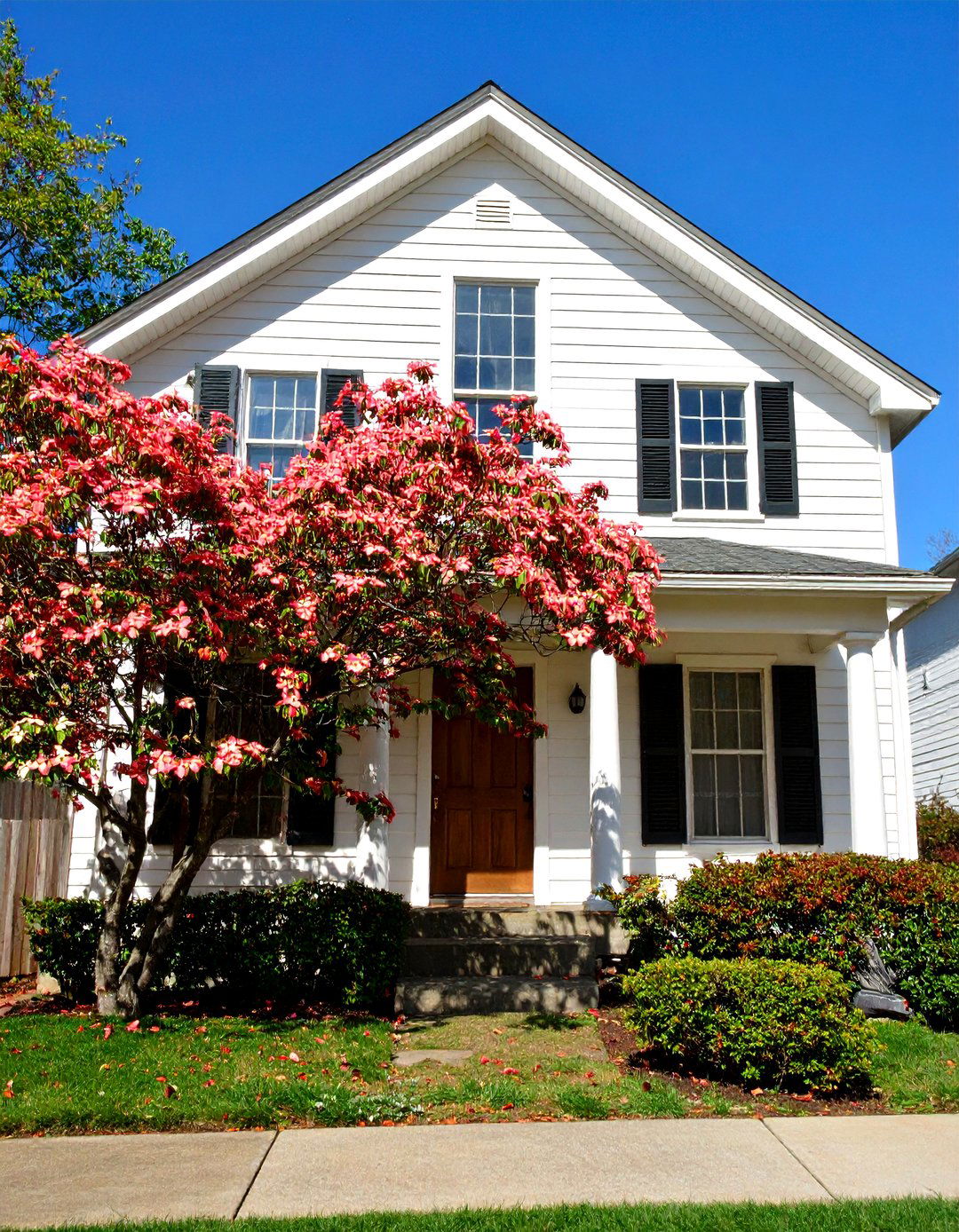
Kousa dogwoods bloom later than native dogwoods, offering pink or white star-like bracts in early summer, followed by ornamental red fruit and strong red-purple fall foliage. They grow to 15–20 feet tall and wide, with a pyramidal habit that becomes more rounded with age. Kousas prefer full sun to part shade and well-drained soils amended with organic compost. Their resistance to dogwood anthracnose makes them a reliable choice for many regions. Minimal pruning—mainly to remove deadwood—maintains a clean structure, while a light spring fertilizer supports health without overstimulating growth
6. Flowering Cherry (Prunus serrulata)
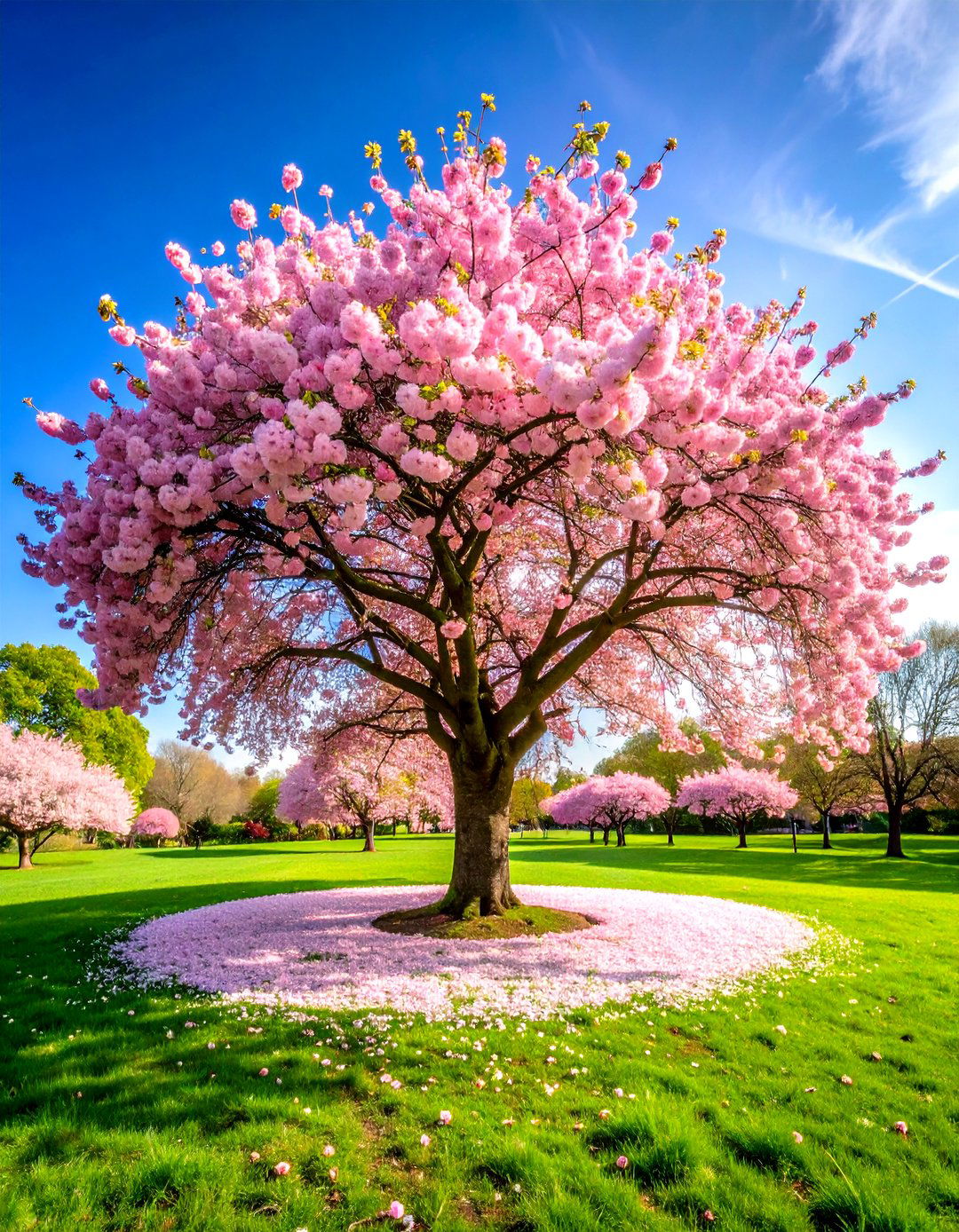
Ornamental cherries, such as Prunus serrulata ‘Kanzan’, enchant front yards with abundant clusters of pink spring blossoms against glossy green leaves. Mature size generally spans 15–25 feet tall and wide, forming a graceful vase or dome shape. These trees require full sun and fertile, well-drained soils. Avoid late-season pruning to protect new wood from winter injury; instead, prune immediately after flowering to remove crossing branches and maintain form. While cherries are moderately pest- and disease-resistant, good sanitation helps prevent issues like shot hole fungus
7. Dwarf Saucer Magnolia ‘Little Gem’ (Magnolia × soulangeana)
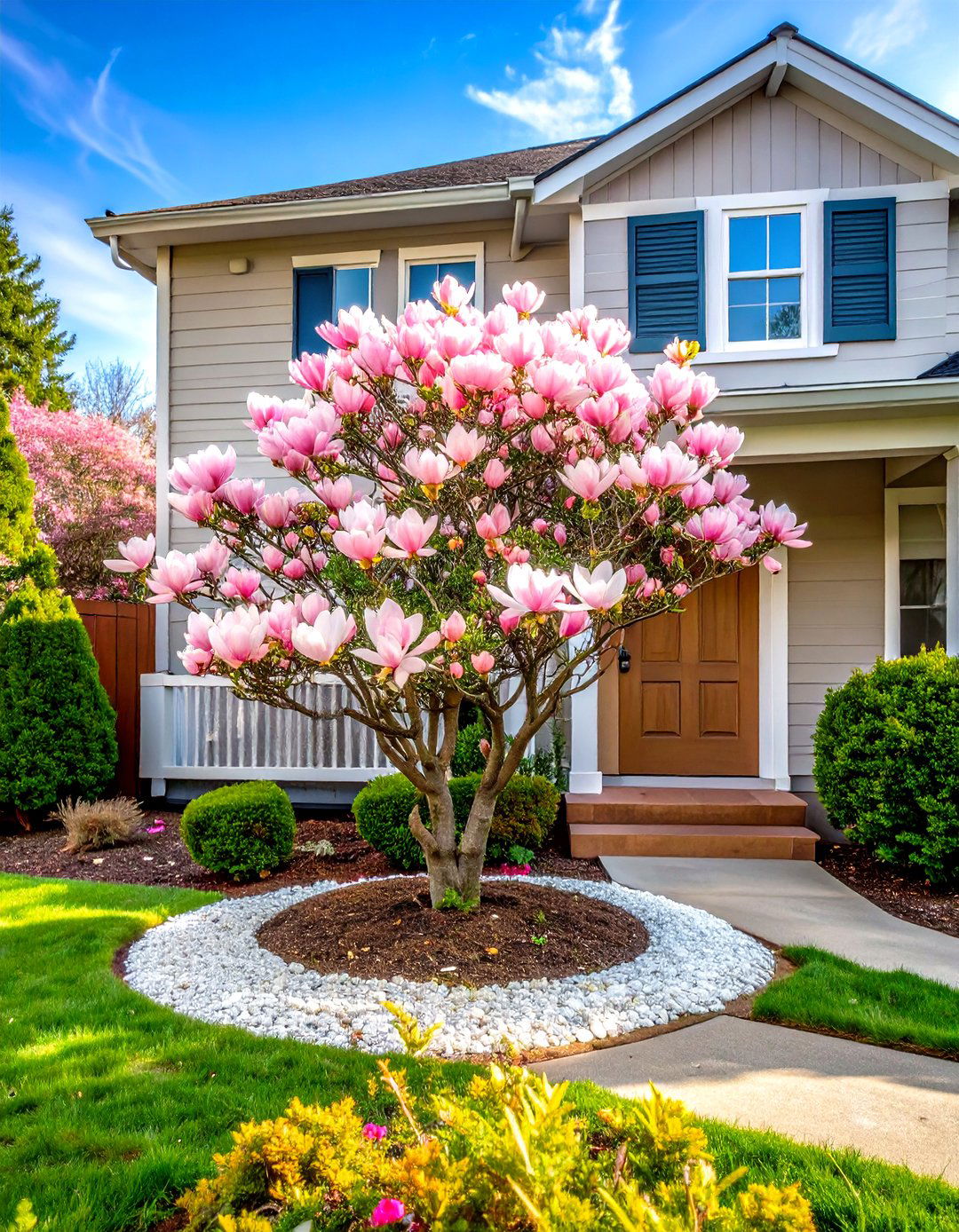
‘Little Gem’ magnolia brings classic saucer-shaped pink-white blooms in early spring to front-yard settings, with glossy evergreen foliage maintaining interest year-round in mild climates. Reaching 10–15 feet tall and 6–8 feet wide, its compact size suits small spaces. Plant in full sun to part shade in well-drained, slightly acidic soil. Protect young trees from late frosts to preserve early blooms. Prune sparingly—only to remove damaged or crossing branches—after the blooming period to shape. Fertilize lightly in spring with a balanced, slow-release formula to support healthy growth
8. Eastern Redbud (Cercis canadensis)
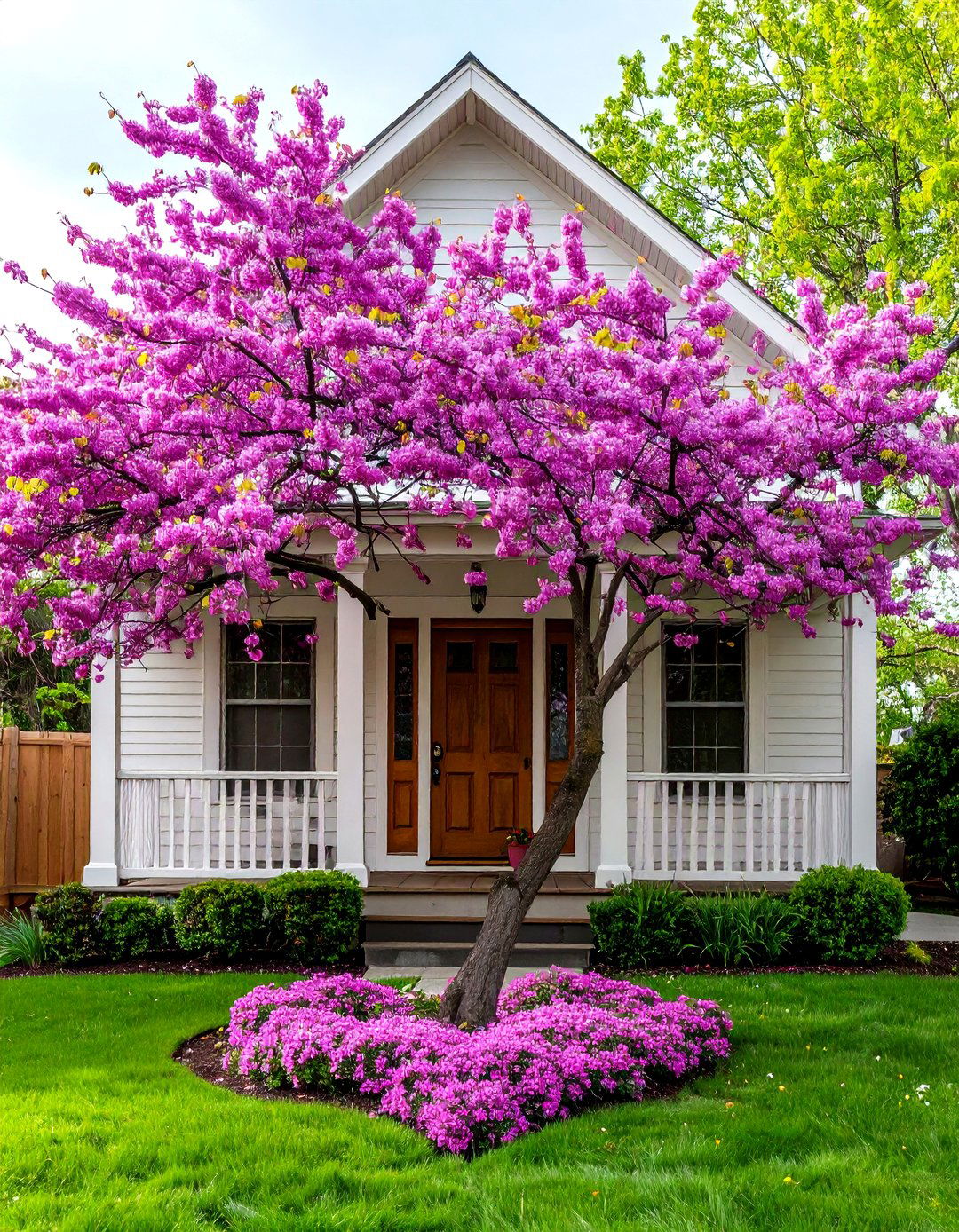
Eastern redbuds offer a spectacular spring display of rosy-pink pea-like blossoms along bare branches, followed by heart-shaped foliage that matures to deep green. Mature size is typically 15–20 feet tall and wide, fitting well under utility lines. Redbuds thrive in full sun to part shade and prefer moist, well-drained soils rich in organic matter. Minimal pruning—mainly to maintain a single trunk and remove suckers—is best done in winter. Their early flowers provide nectar for bees, and the emerging leaves add lush color throughout summer
9. White Fringe Tree (Chionanthus virginicus)
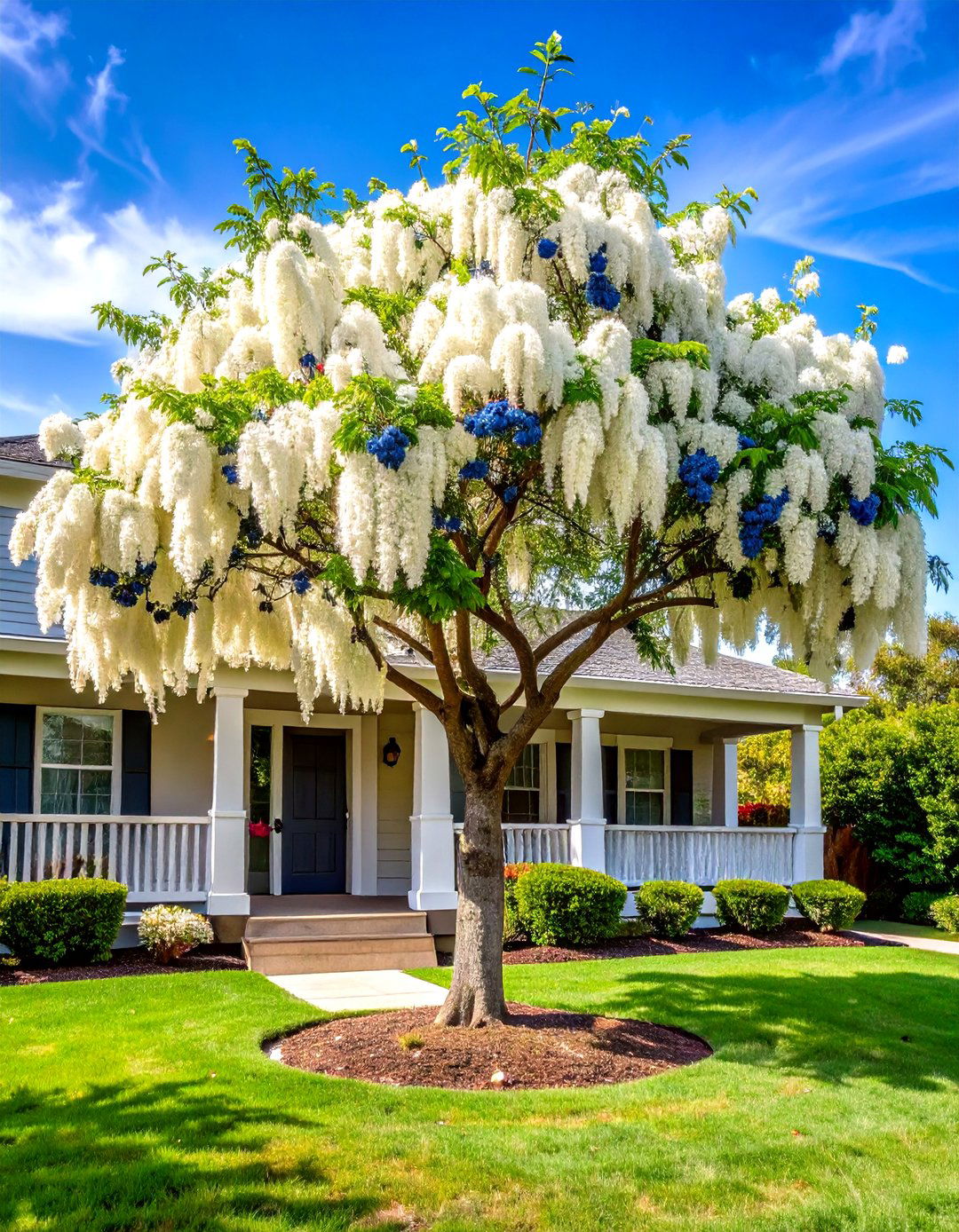
Fringe trees enchant with lacy clusters of fragrant white blooms in late spring, resembling delicate fringe draped across branches. Growing 12–20 feet tall and wide, they fit neatly in front yards. Fringe trees prefer full sun to part shade and moist, well-drained soils but tolerate occasional wetness. They require little pruning—only the removal of dead limbs—and benefit from a spring mulch of compost. Birds feed on the small blue-black fruits in summer, adding wildlife interest. Chionanthus virginicus is hardy in USDA Zones 3–9
10. Japanese Snowbell (Styrax japonicus)
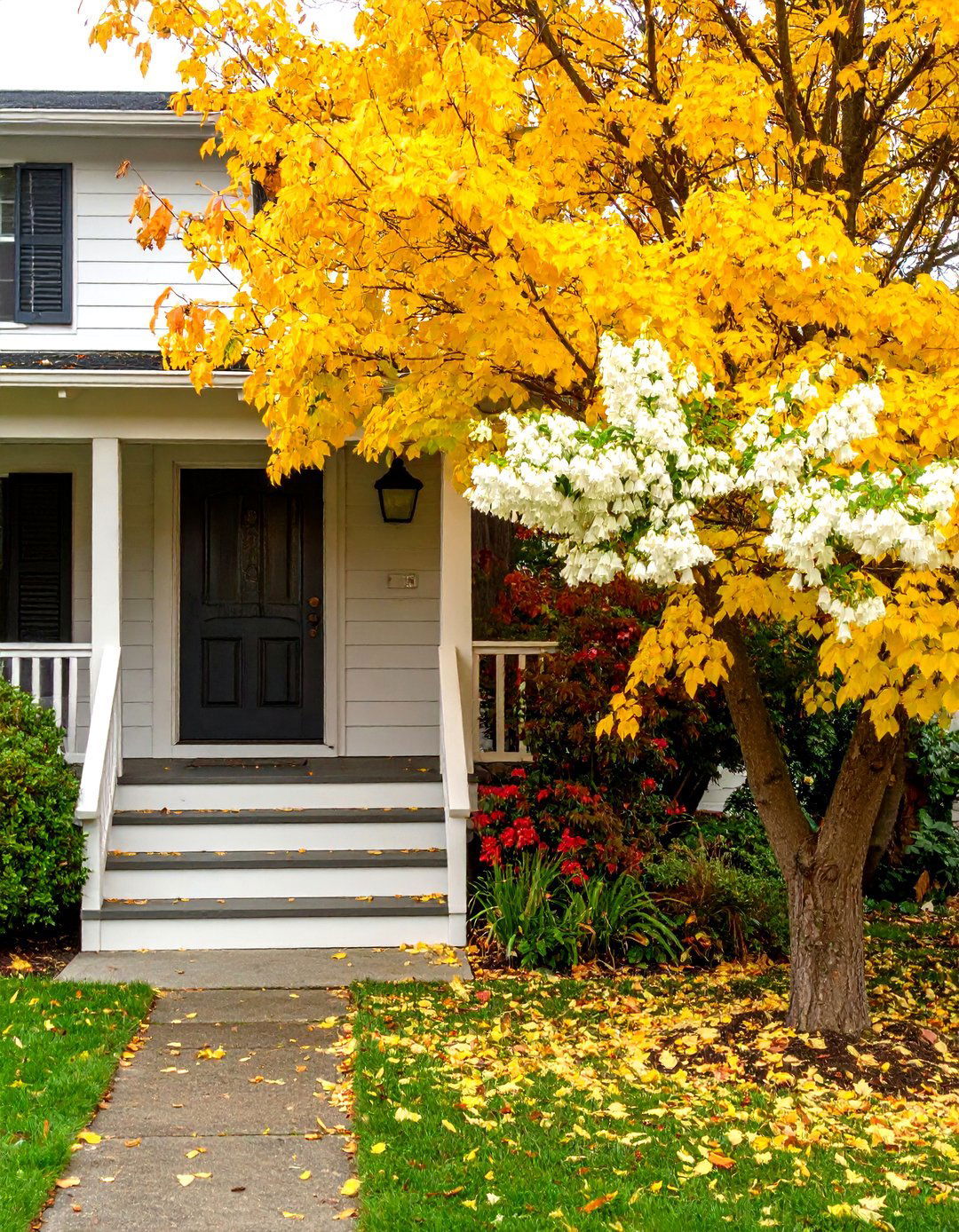
The Japanese snowbell graces front yards with elegant, fragrant white bell-shaped flowers along horizontal branching in late spring to early summer, followed by blue-gray drupes and yellow fall foliage. Trees grow 15–20 feet tall and wide, forming a broad-rounded crown. Plant in full sun to partial shade in rich, well-drained, slightly acidic soils. Dig a planting hole twice the root ball width, backfill with amended soil, and water regularly during establishment. Prune lightly after flowering to shape, removing crossing branches. Cultivar selections like ‘Pink Chimes’ and ‘Crystal’ offer pink blooms and columnar forms
11. Japanese Stewartia (Stewartia pseudocamellia)
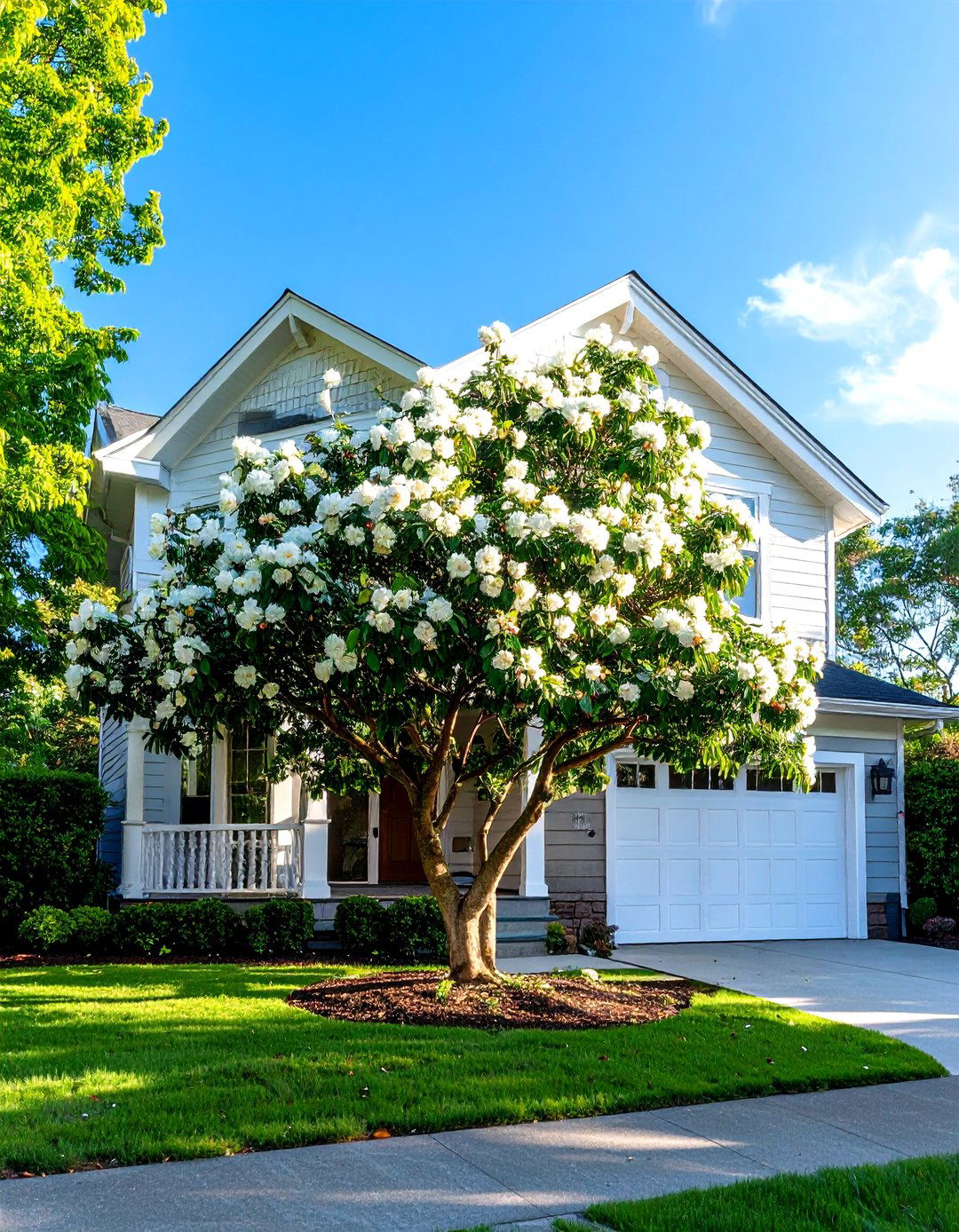
Japanese stewartia charms with camellia-like white flowers bearing showy yellow stamens in early summer, vibrant orange-red fall color, and mottled exfoliating bark for winter interest. In cultivation, it typically matures to 20–30 feet tall with a narrower spread. Stewartia thrives in full sun to part shade and moist, organically rich, well-drained soils. Plant in spring or fall, mulch to conserve soil moisture, and avoid drought stress. Prune selectively to remove dead or crossing branches. Its multi-season appeal makes it an excellent specimen or focal-point tree in front yards
12. Columnar European Hornbeam (Carpinus betulus ‘Fastigiata’)
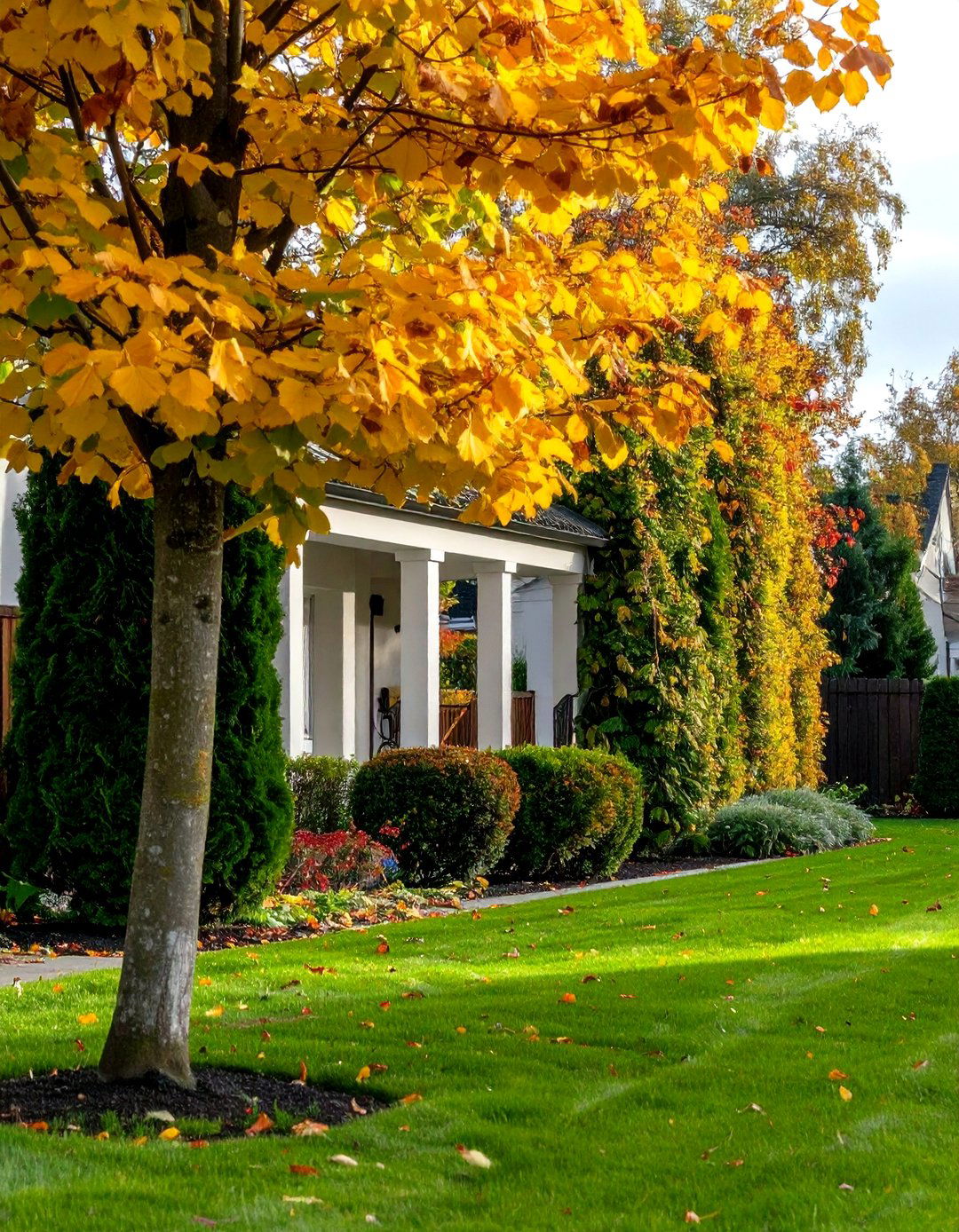
‘Fastigiata’ hornbeam brings a striking upright, narrow columnar form, reaching 20–30 feet tall but only 6–10 feet wide—perfect for tight spaces or flanking entryways. It features dense, serrated, dark green foliage that turns golden bronze in fall. Hornbeams tolerate full sun to partial shade and prefer moist, fertile, well-drained soils. They respond well to pruning, allowing formal hedges or topiary shapes. Deer rarely browse hornbeam foliage. Both the species and ‘Fastigiata’ have earned the RHS Award of Garden Merit for performance
13. Weeping Higan Cherry (Prunus subhirtella ‘Pendula’)
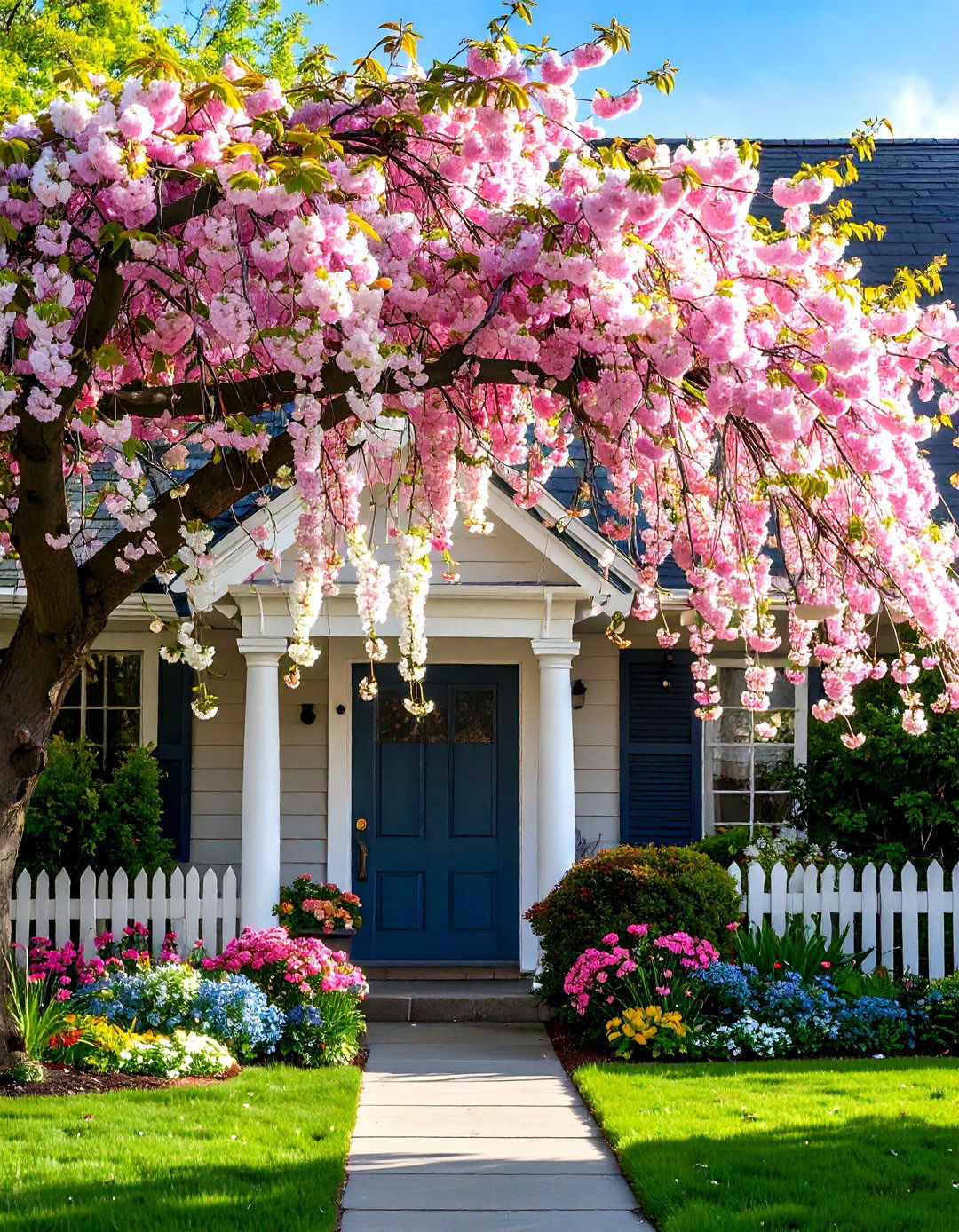
The weeping higan cherry forms a graceful, cascading canopy of light pink-white blooms in early spring before its glossy leaves emerge. Trees typically reach 20–30 feet tall with a 15–25 foot spread. Plant ‘Pendula’ in full sun and fertile, well-drained soils. After flowering, prune to remove deadwood and maintain clearance beneath branches. Weeping cherries are prone to twig cankers and powdery mildew; ensure good air circulation and remove affected limbs promptly. Their dramatic form makes them a standout specimen in any front-yard landscape
14. Carolina Silverbell (Halesia carolina)
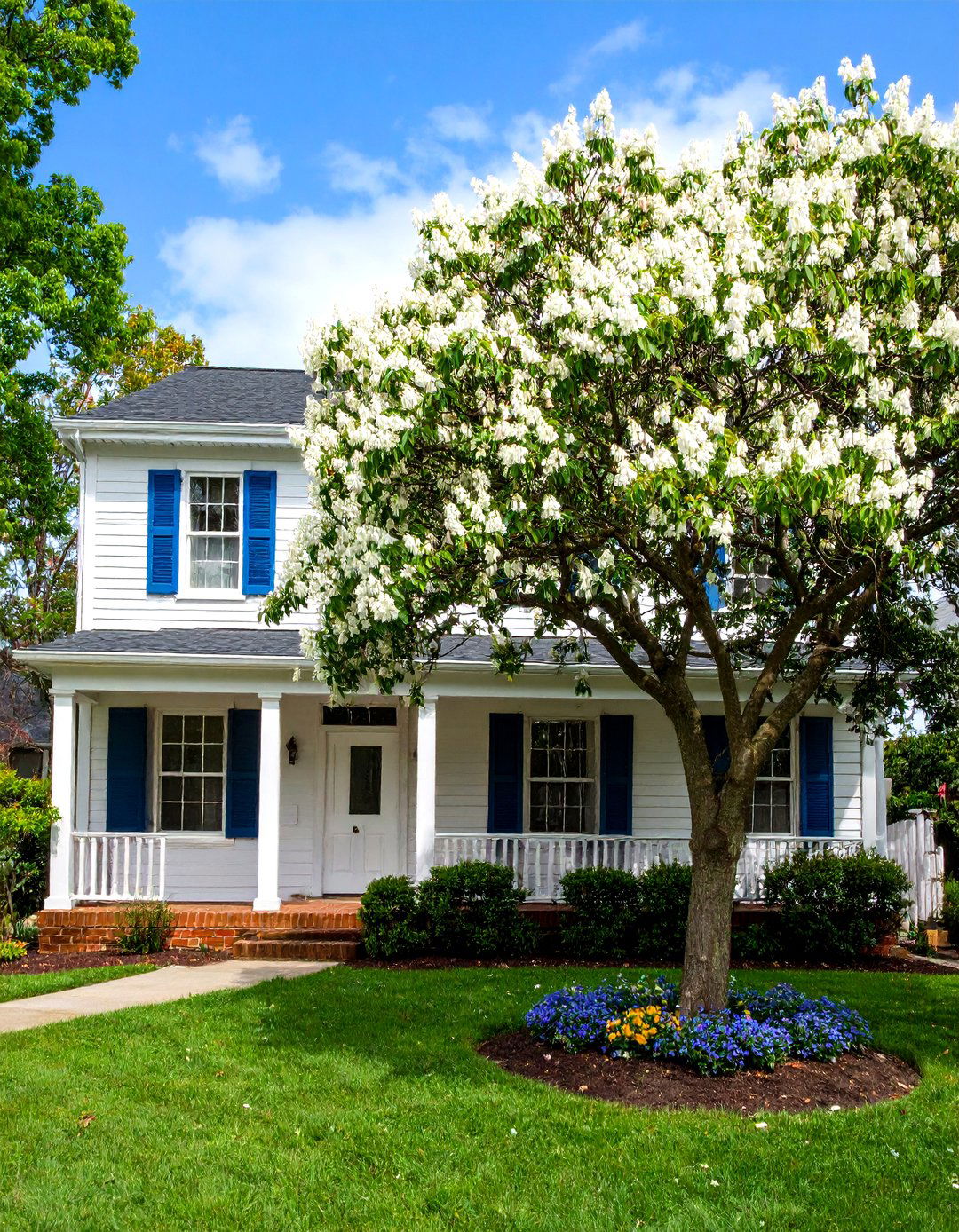
Carolina silverbells showcase draping clusters of white, bell-shaped flowers in mid-spring, followed by green, four-winged fruit and golden autumn leaves. As a multi-stemmed shrub or small tree, they reach 15–25 feet tall but can be trained to a single trunk for a neat specimen form around 12–15 feet tall. Silverbells prefer partial shade and moist, acidic, well-drained soils. Prune lightly after flowering to thin crowded stems. Hardy in USDA Zones 4–8, they add delicate spring charm and four-season interest to smaller front yards
15. Japanese Tree Lilac (Syringa reticulata)
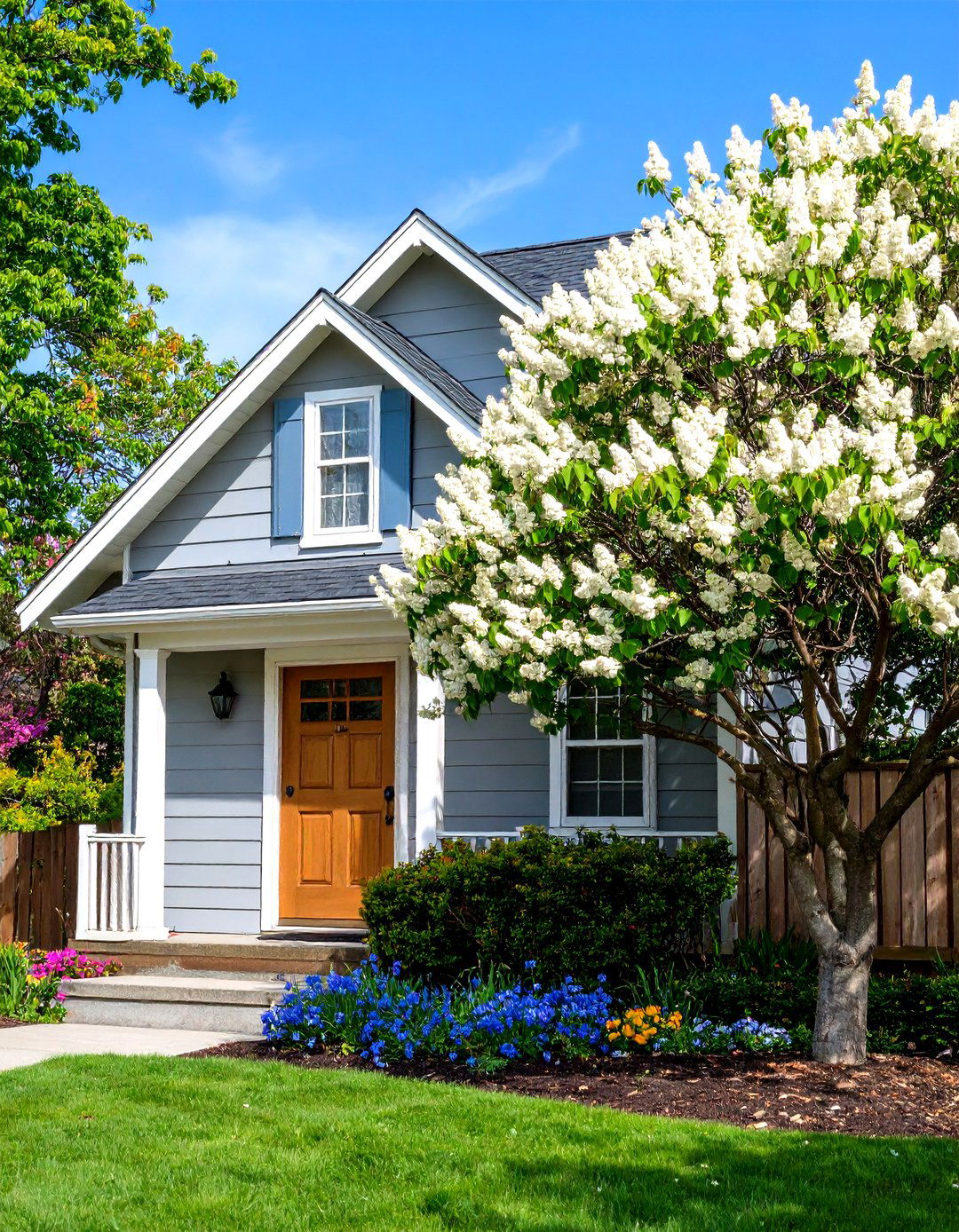
Japanese tree lilac dazzles with creamy-white, fragrant panicles of flowers in early summer well after common lilacs have finished blooming. Trees grow 20–30 feet tall with a 15–25 foot spread, boasting attractive gray bark and yellow fall color. They thrive in full sun and average, well-drained soils, tolerating urban conditions and drought. Prune immediately after flowering to shape and remove spent blooms. S. reticulata ‘Ivory Silk’ and ‘Zhang Zhiming’ (‘Beijing Gold’) are award-winning cultivars valued for disease resistance and prolific bloom
16. Flowering Crabapple (Malus ‘Prairifire’)
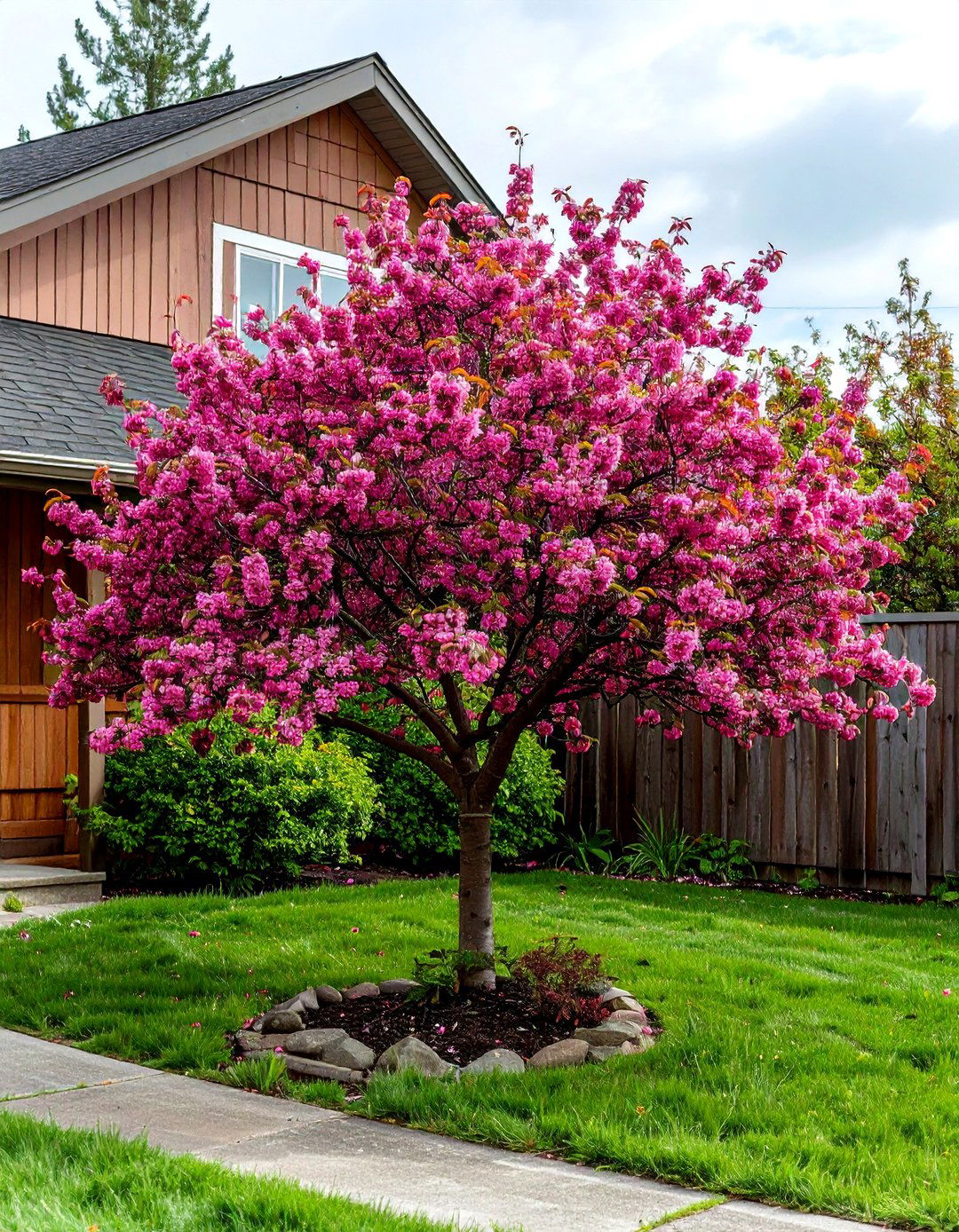
‘Prairifire’ crabapple brings deep pink spring blossoms, glossy purple-red foliage all summer, and persistent small dark red fruit through winter. Trees remain a compact 15–20 feet tall and wide, fitting neatly in front-yard beds. They thrive in full sun and well-drained soils. Crabapples may require occasional thinning to prevent fungal diseases; prune in late winter to improve airflow. ‘Prairifire’ is especially resistant to apple scab and fire blight, making it a low-maintenance choice for front drive borders or near entrances
17. Korean Mountain Ash (Alniaria alnifolia)

Also known as Korean whitebeam, this small tree reaches 10–20 feet tall with an upright or rounded habit. It offers white spring blossoms, glossy green leaves that turn orange-pink in fall, and bright red berries that linger into winter. Korean mountain ash prefers full sun to part shade in rich, well-drained soils. Its compact root system makes it suitable for limited spaces. ‘Skyline’ is a selected cultivar prized for its fastigiate growth. Birds enjoy the fruit, and the fall color enhances curb appeal in smaller yards
18. Dwarf Alberta Spruce (Picea glauca ‘Conica’)
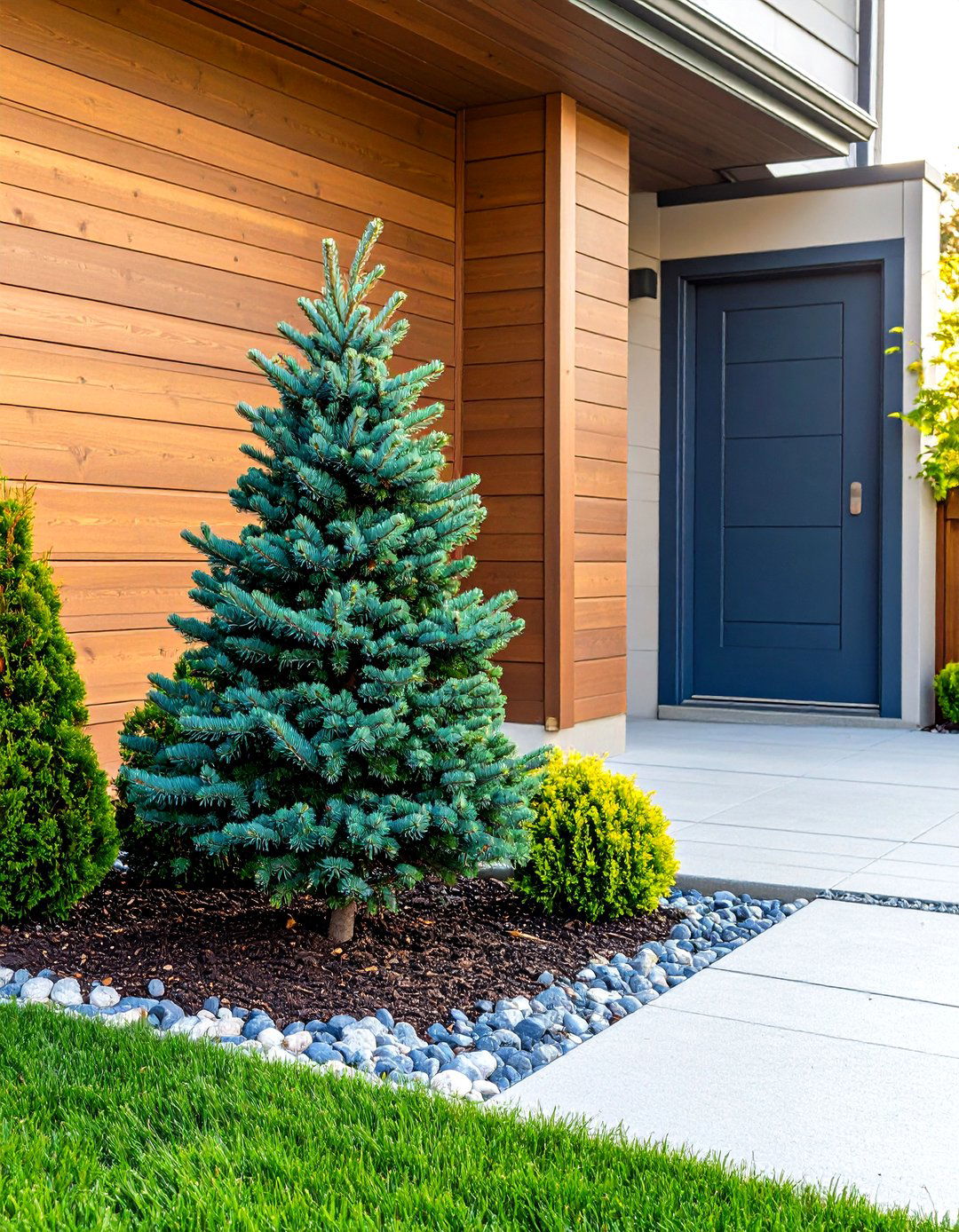
This compact conifer forms a perfect narrow cone, growing only 6–8 feet tall and 3–5 feet wide, ideal for foundation plantings or containers. ‘Conica’ features dense blue-green needles that resemble juvenile white spruce foliage. It thrives in full sun to part shade and moist, well-drained soils. Avoid overhead watering to reduce needle blight. Occasional pruning removes reverted shoots that bear adult foliage to maintain the dwarf form. Hardy to USDA Zone 2, Dwarf Alberta Spruce provides low-maintenance, year-round structure in front-yard designs
19. Purple Smoke Tree (Cotinus coggygria ‘Royal Purple’)

Purple smoke trees earn their name from wispy pink-purple plumes that emerge in late spring, resembling drifting smoke over dark burgundy foliage. Cultivar ‘Royal Purple’ grows 10–15 feet tall and wide, making a bold statement against lighter backgrounds. Plant in full sun and well-drained soils; smoke trees tolerate drought once established but dislike overly wet sites. Prune in early spring to remove dead wood and stimulate vibrant new growth. Their unusual blooms, fiery fall color, and textured bark deliver striking four-season interest
20. Wax Myrtle (Myrica cerifera)
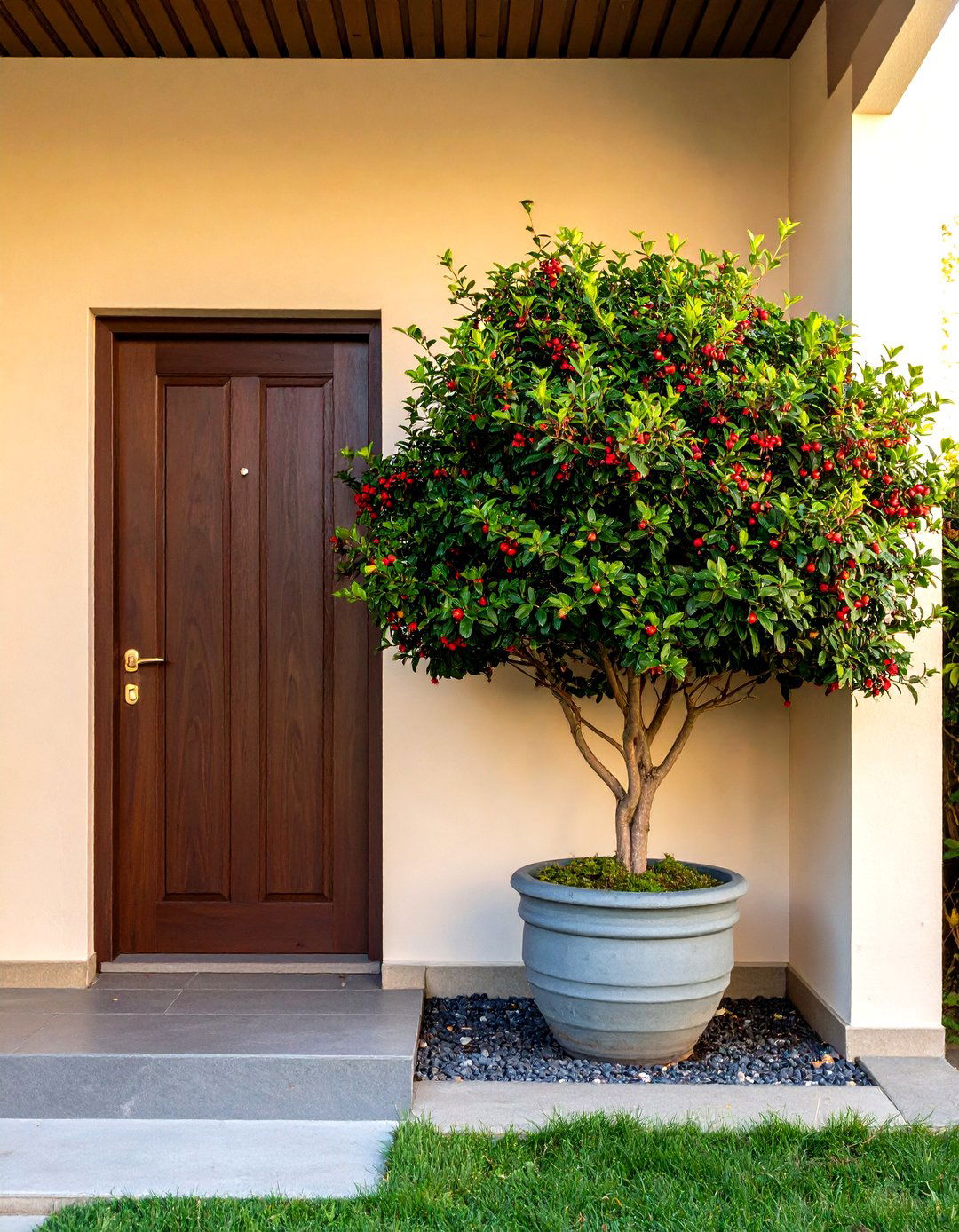
Wax myrtle is an evergreen shrub or small tree reaching 8–12 feet tall with a rounded habit and fragrant, aromatic foliage. It tolerates a wide range of soils—wet to well-drained—and thrives in full sun to part shade. Planting in fall or spring helps establishment. Prune annually to maintain shape and encourage denser growth. Male and female plants are dioecious; female plants produce decorative waxy berries that historically provided bayberry candle wax. Hardy in USDA Zones 7–10, wax myrtle offers year-round screening, fragrance, and wildlife habitat
Conclusion:
Front-yard trees should balance size, aesthetics, and maintenance to enhance curb appeal without overwhelming limited spaces. From the delicate lace of Japanese maples to the fragrant bells of snowbells, the four-season structure of Stewartia, and the evergreen reliability of dwarf spruces and wax myrtles, this curated selection of 20 small trees offers options for diverse climates, soil types, and design styles. By choosing the right species and following planting and care recommendations—proper siting, soil preparation, mulching, and light pruning—you can create a dynamic, welcoming front yard that thrives year-round.


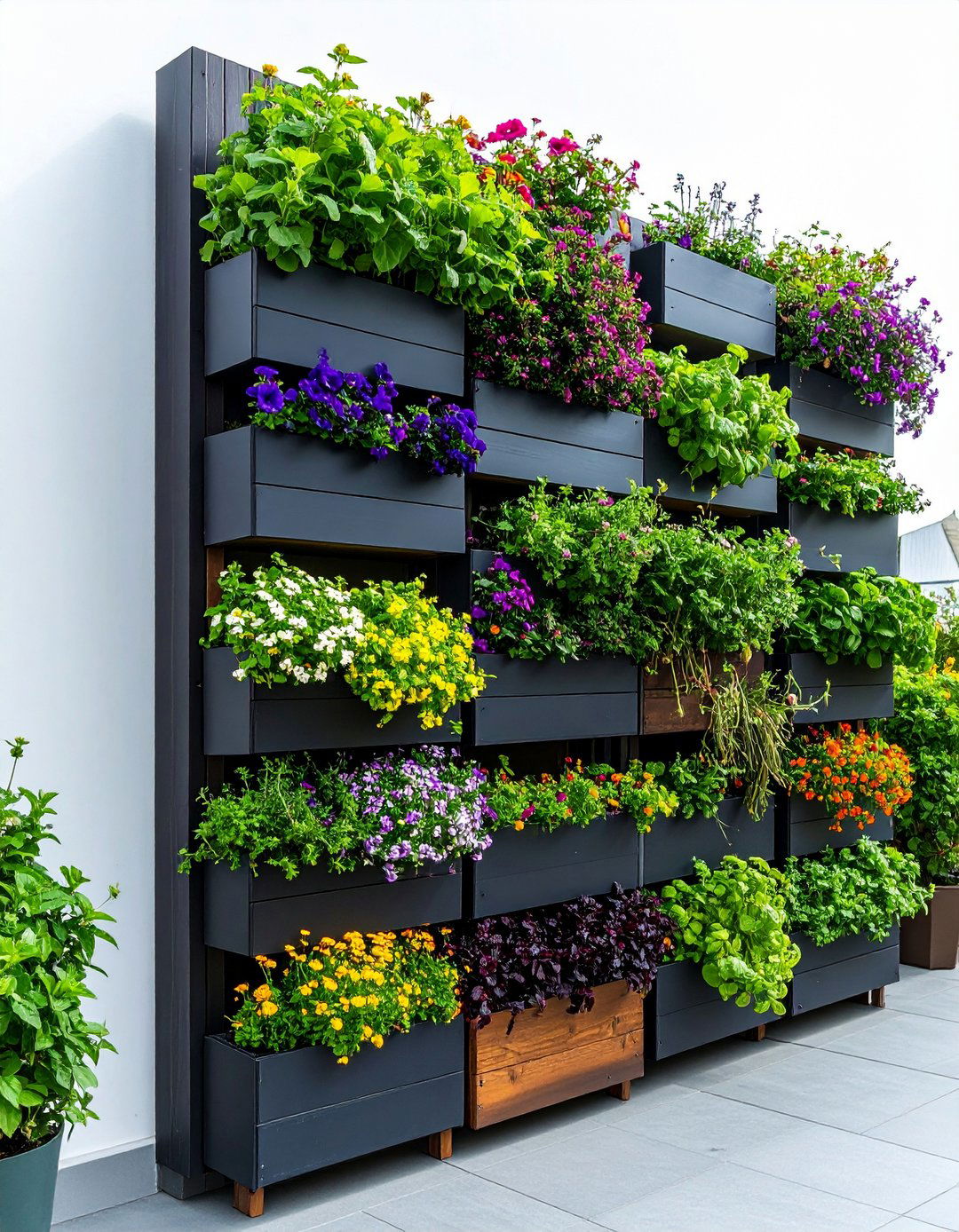
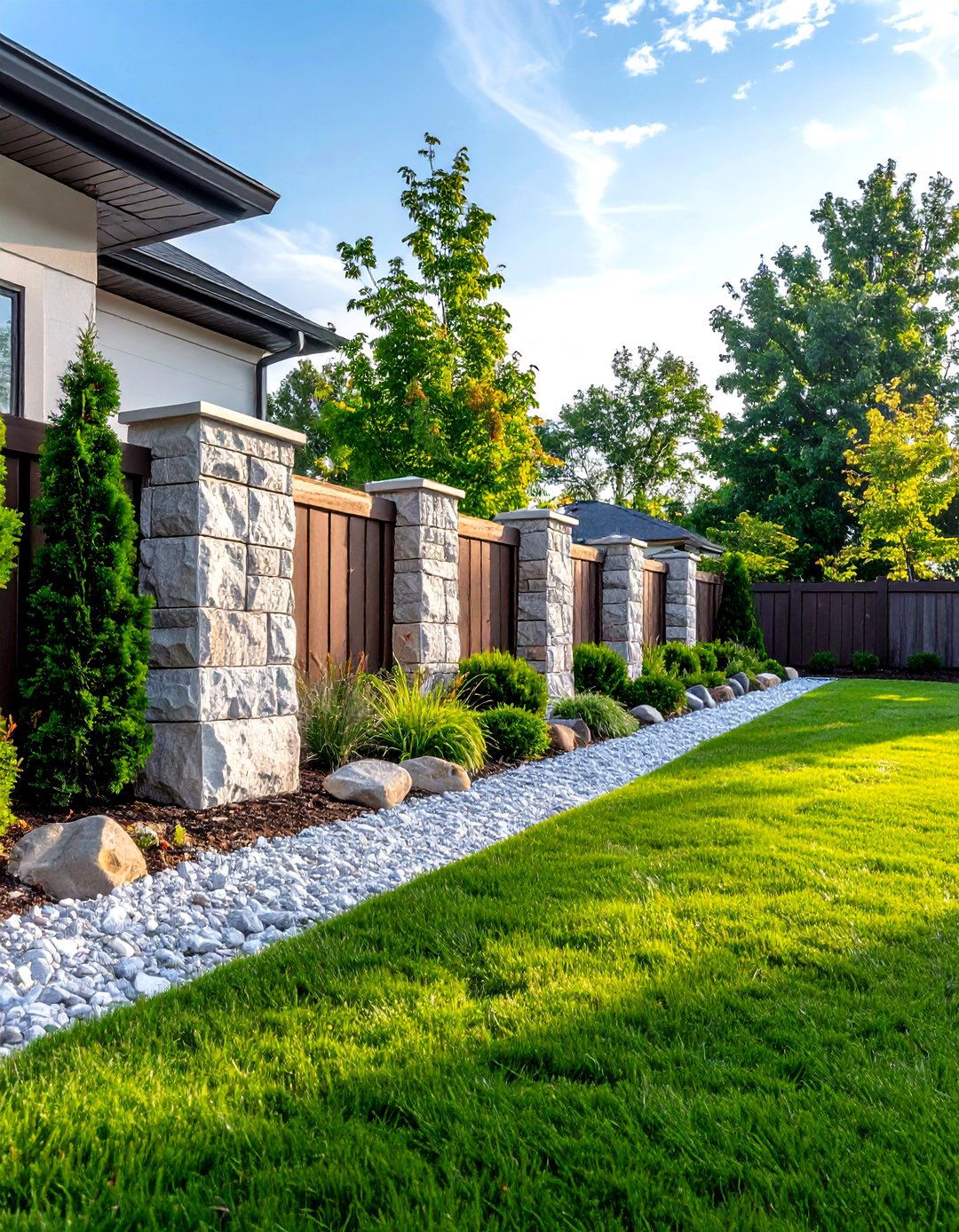
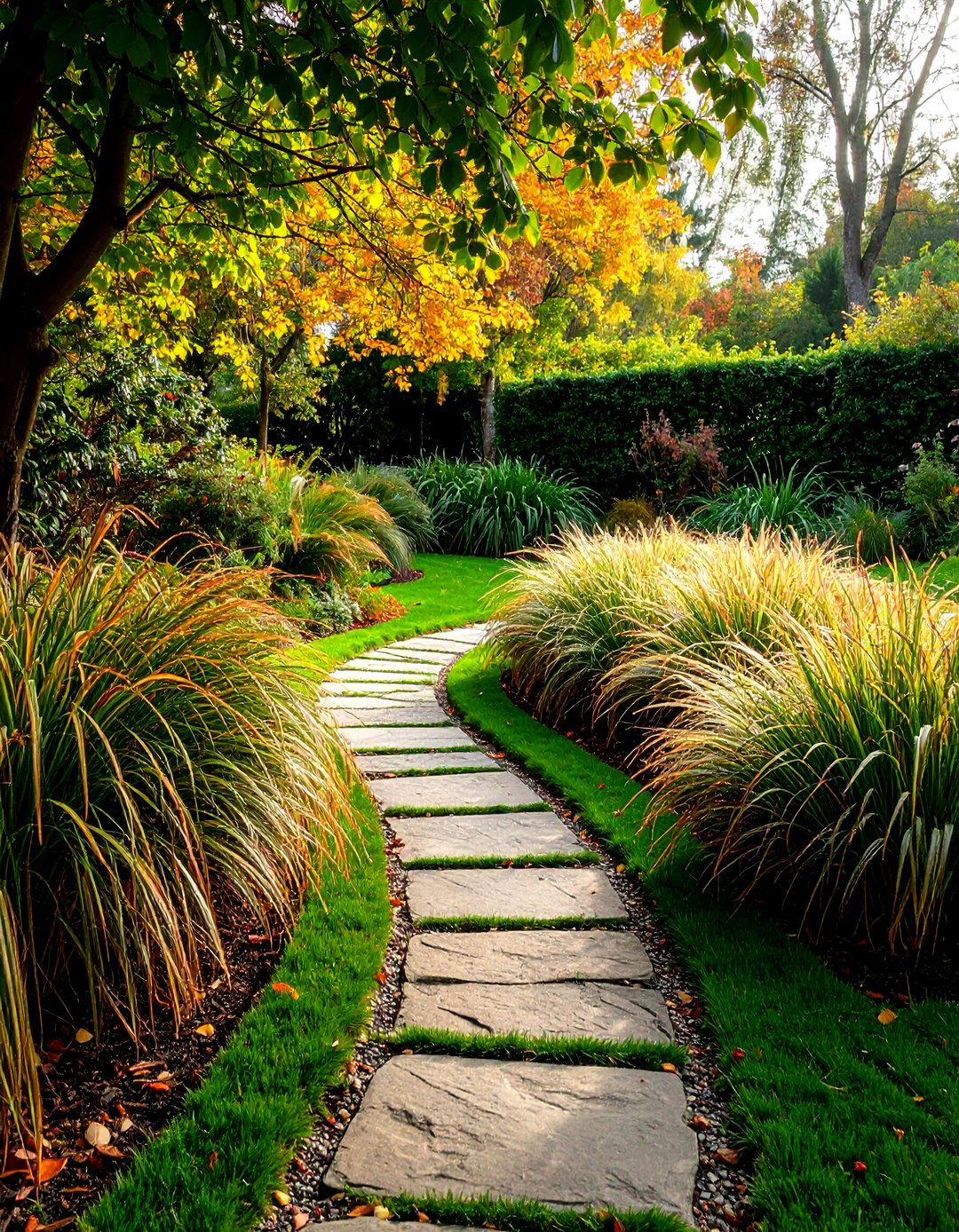
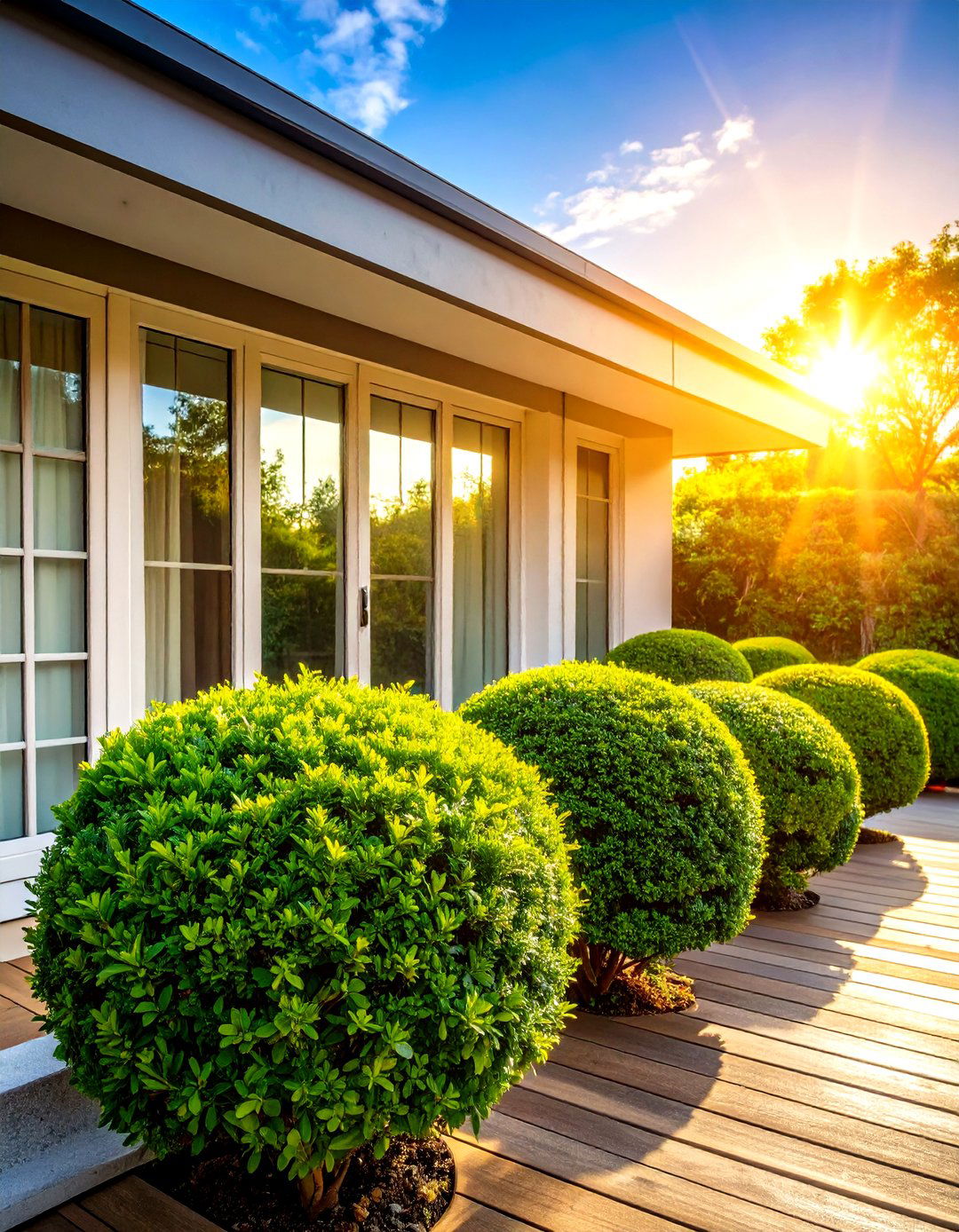
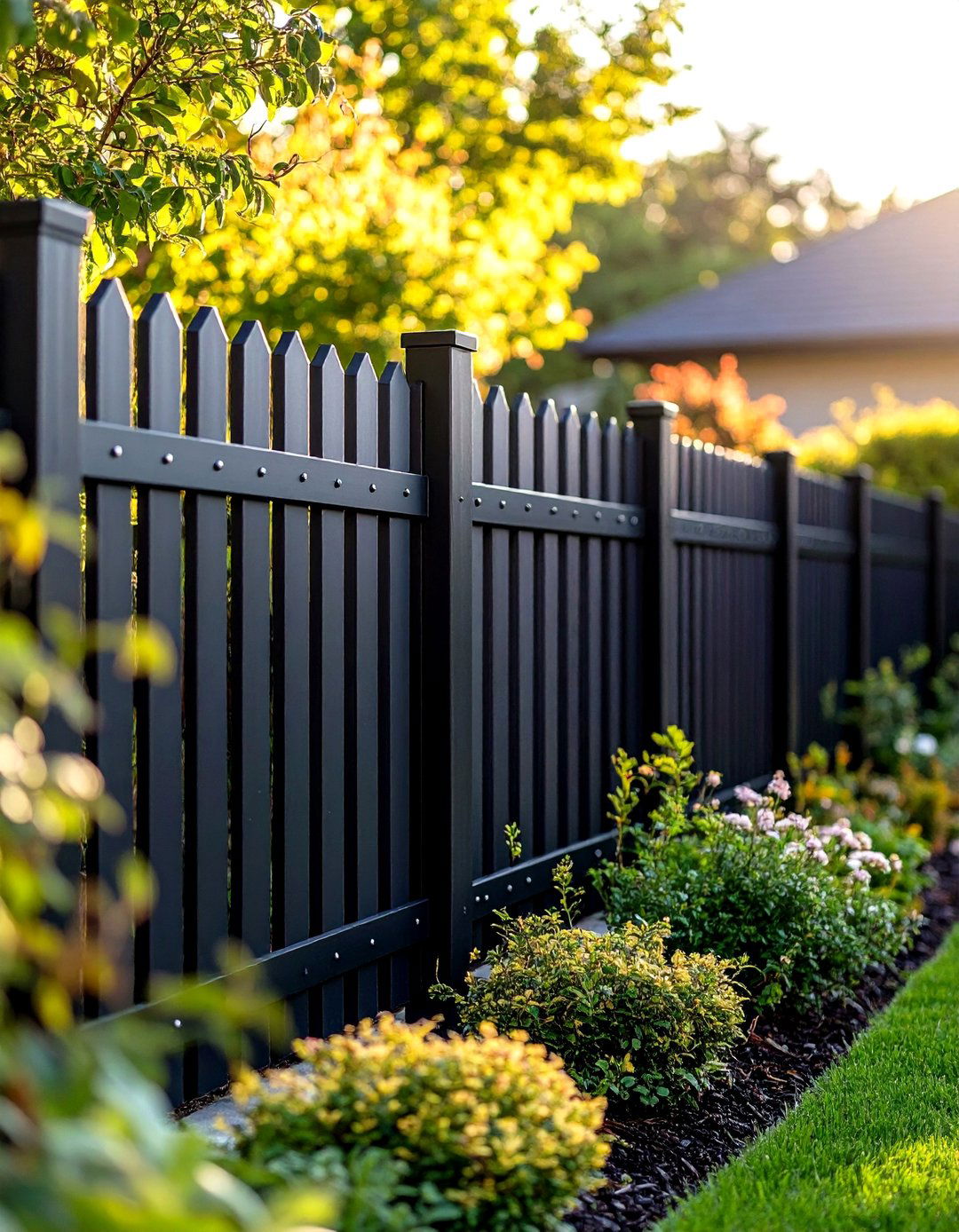
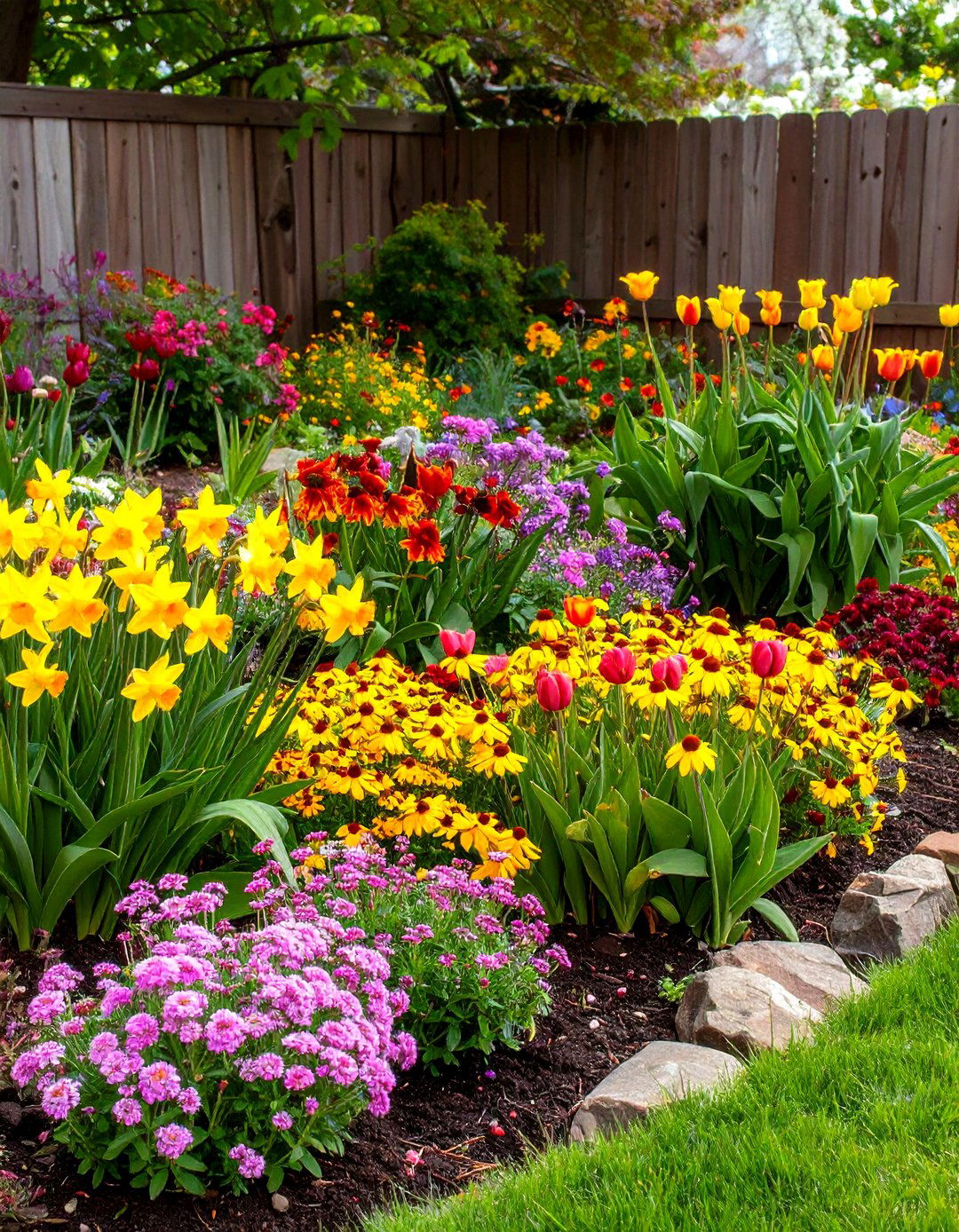

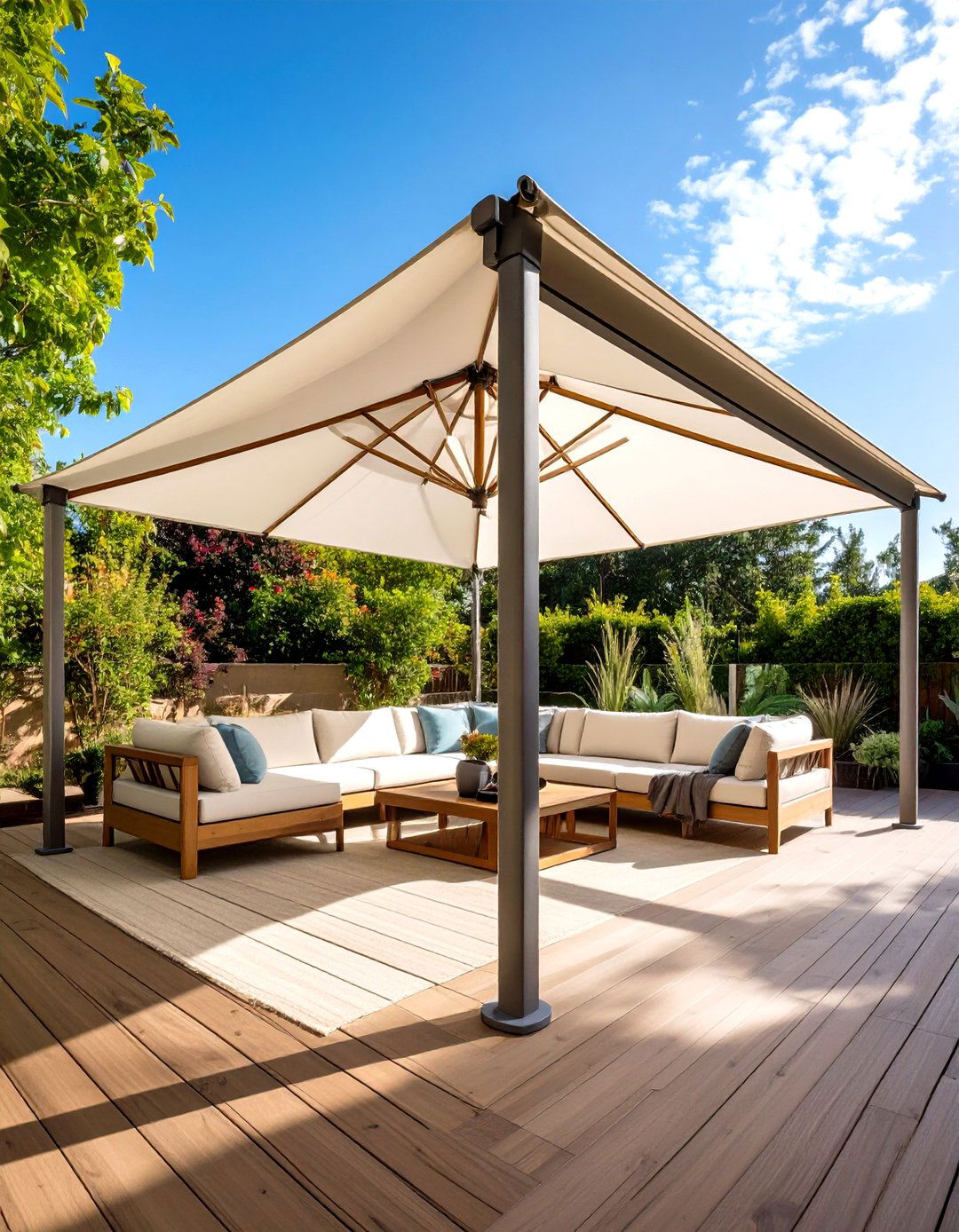
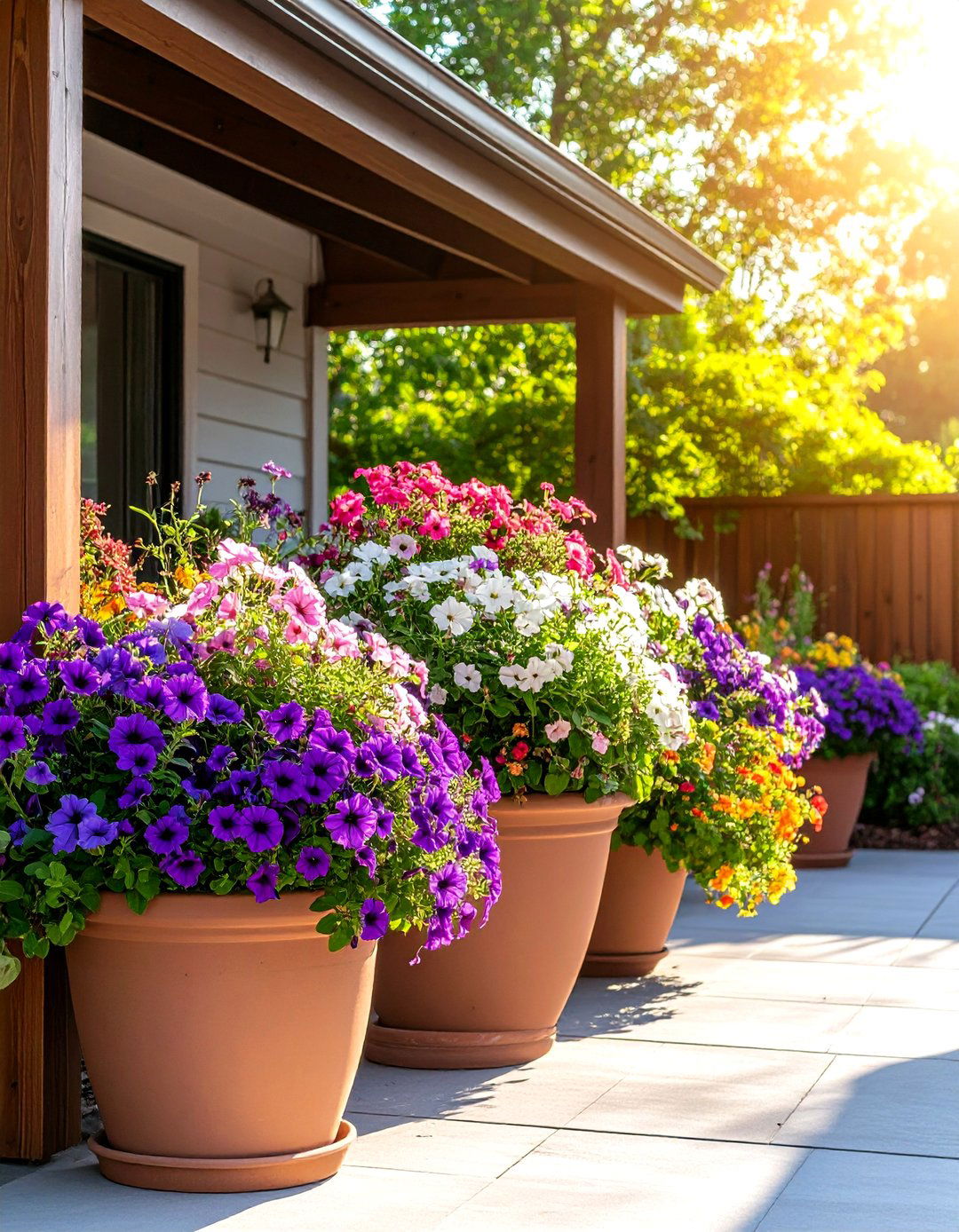




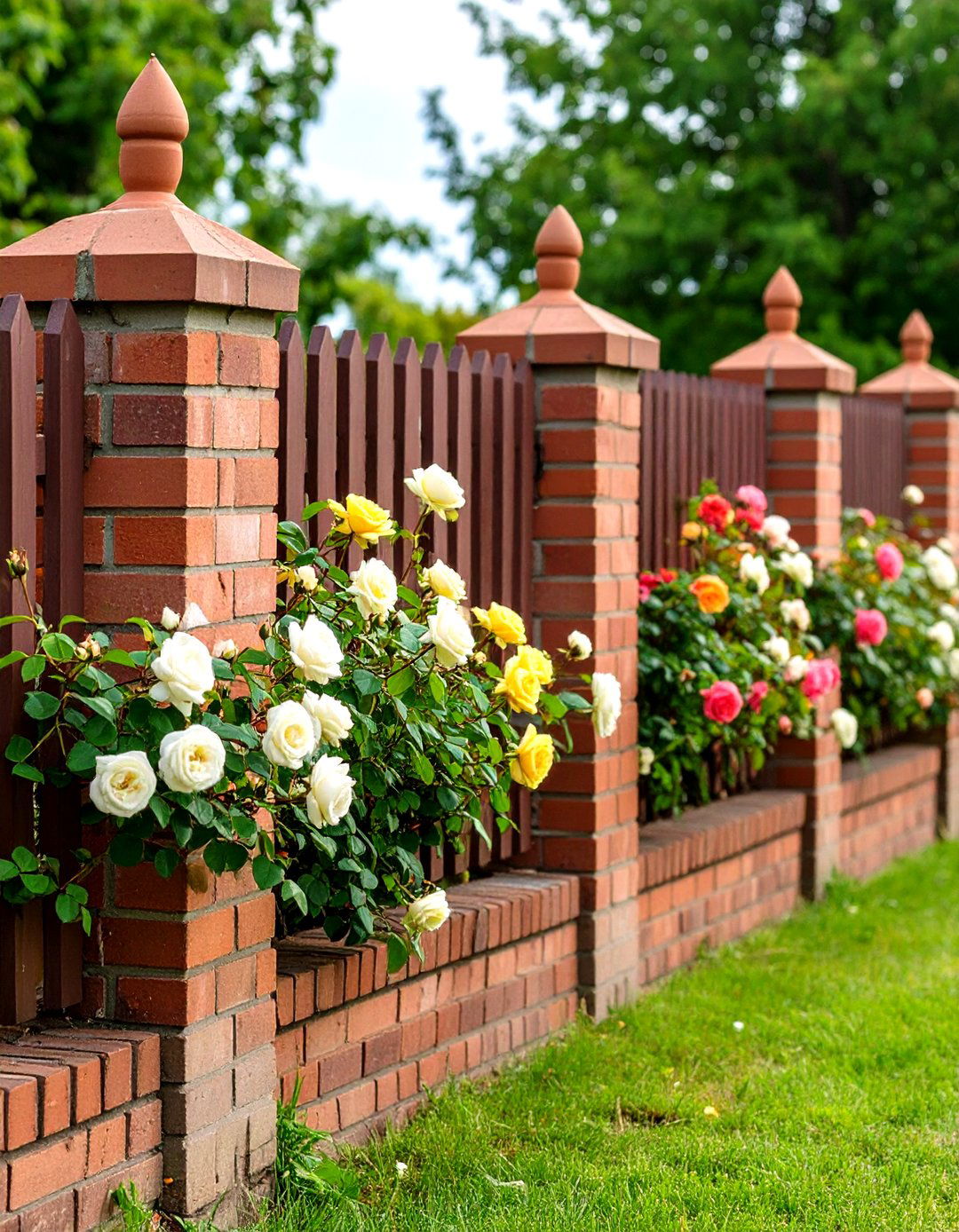
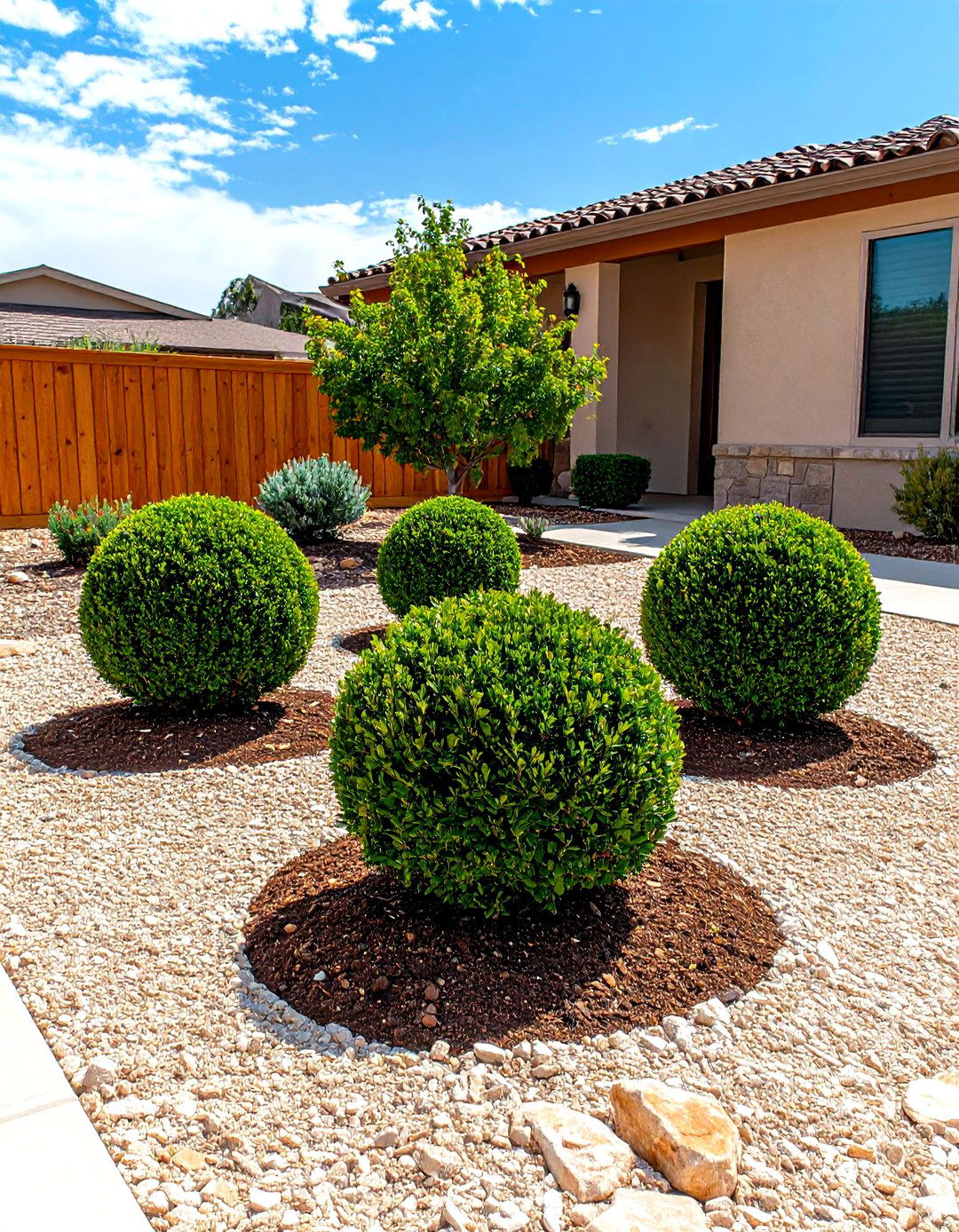
Leave a Reply